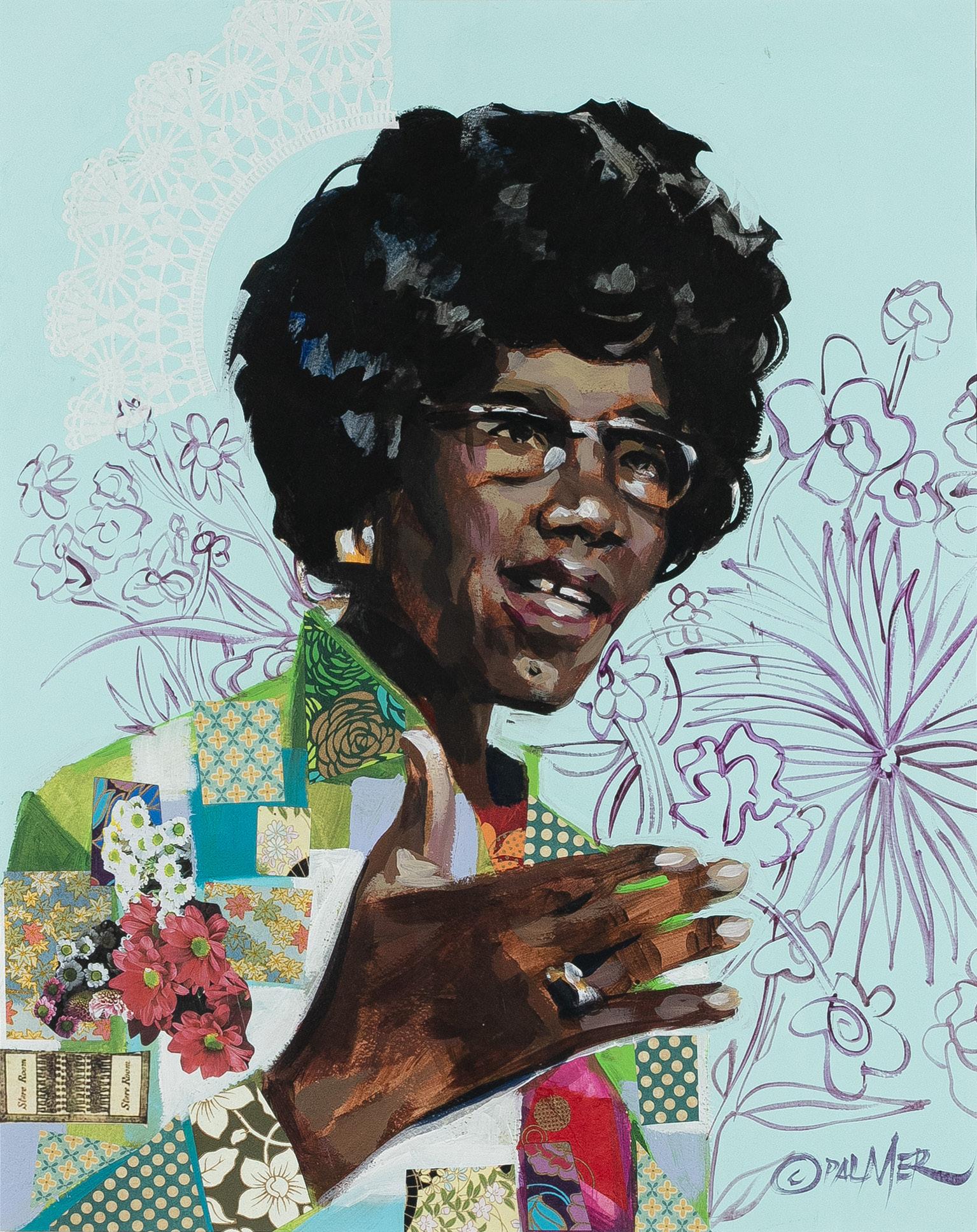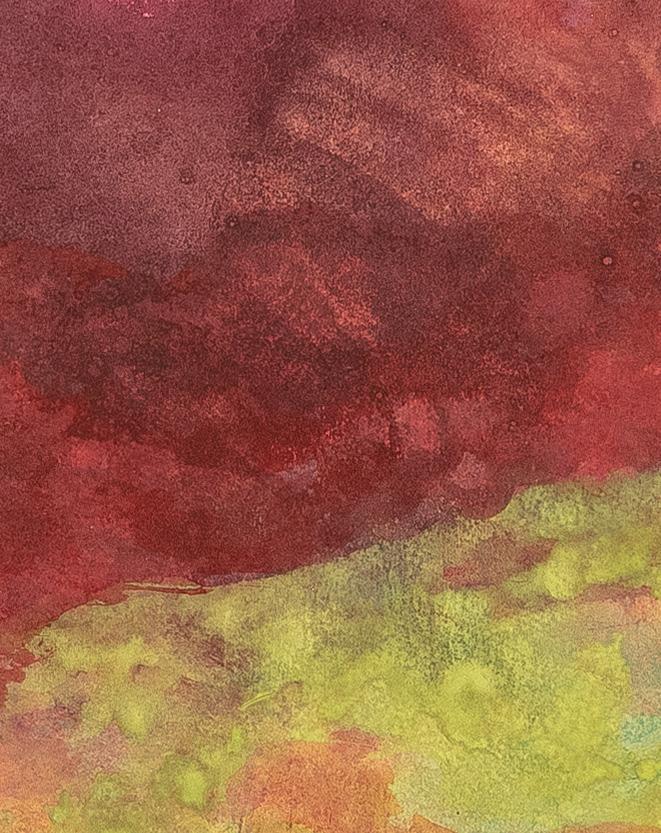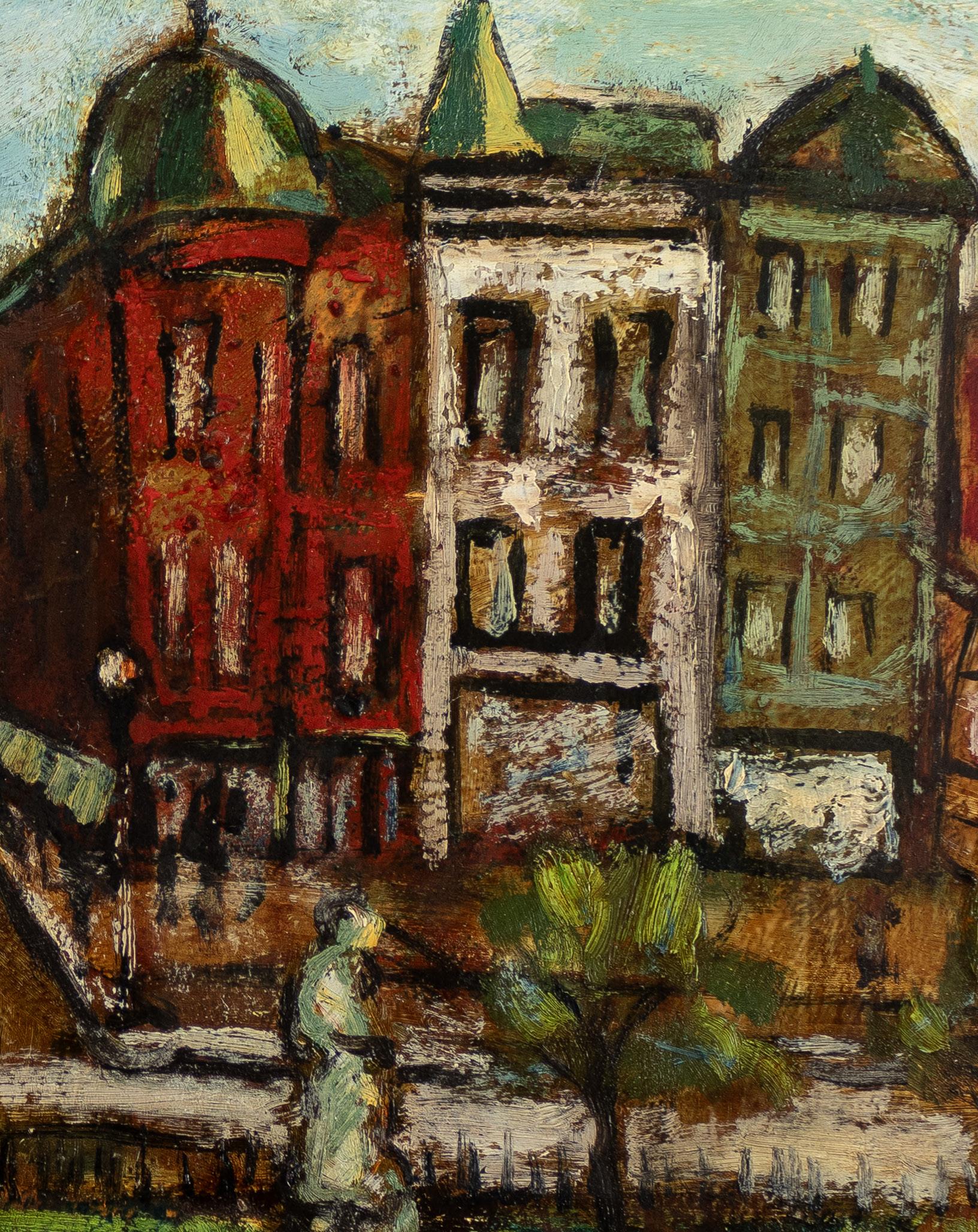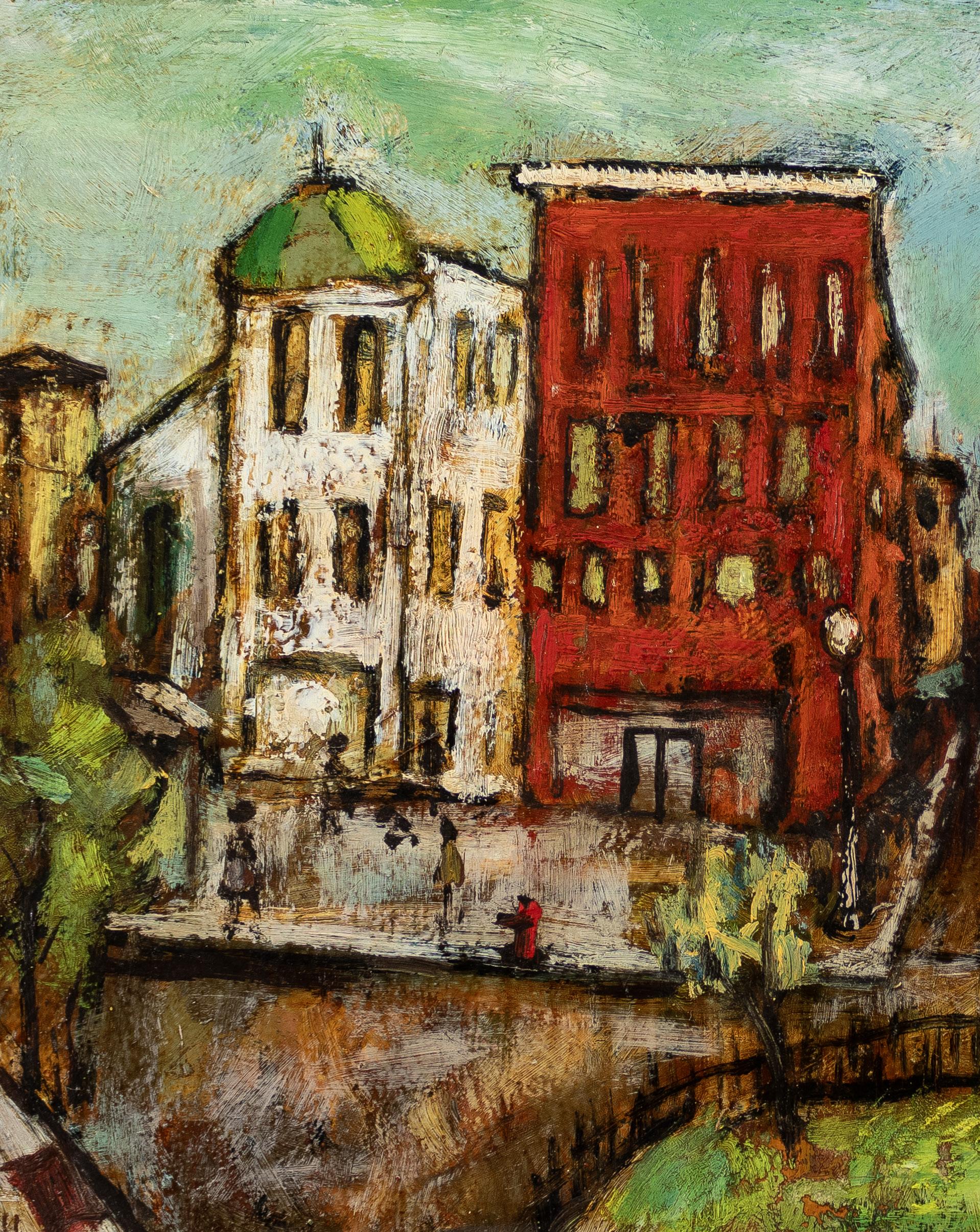

Selections from a Private Collection
Presented by Black Art Auction
Selections from a Private Collection
Presented by Black Art Auction
Black Art Auction - Private Sales Division is pleased to present a unique opportunity to acquire directly these 19 fine artworks from a private collection. Interested parties may email or call our office for further information or a price list at info@ blackartauction.com or (314) 727-6249.
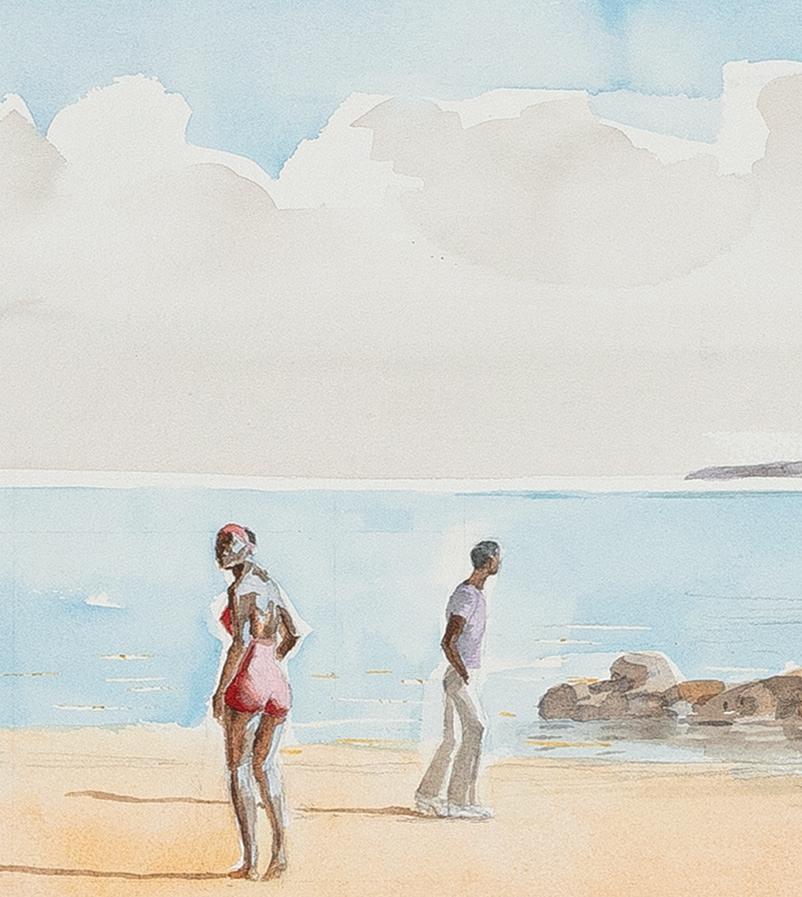
Collector’s Statement

We believe art is more than a visual experience—it’s a narrative that shapes how we see the world. Our carefully curated collection reflects the intricate tapestry of our lives, celebrating the present moment, honoring the richness of our cultural past, and inspiring a visionary future.
Each piece in our collection is chosen not only for its aesthetic excellence but for the story it tells. By bridging the personal and the universal, we invite you to explore a dialogue between art and life, where every work serves as a window into shared experiences, collective history, and boundless possibility.
Discover the world through our lens and join us in creating a legacy of art that resonates across generations.
Ernie Barnes (1938-2009)
WXKS DJ
acrylic on canvas
20 x 30 inches
signed
Exhibited:
North Carolina Museum of History
Ernie Barnes began his career as an offensive lineman - playing pro football for six seasons with the San Diego Chargers, the New York Titans, and the Denver Broncos. Eventually, Barnes grew disillusioned with the conflict. In interviews he had been known to say that he hated the violence and physical torment of the sport. He proposed that he take up the position of official artist of the American Football League. The owners agreed and with the support of Sonny Werblin, owner of the Jets, Barnes’ work was brought to the attention of art critics who compared his work to that of George Bellows.
Barnes attended North Carolina College as an art major on full athletic scholarship. Ed Wilson, who taught sculpting, had a remarkable impact on Barnes. First, he taught him about the work of the early 20th century African American artists. Then, he taught him how to translate his athleticism on the field to the canvas. Barnes populated his canvasses with elongated forms full of movement and was influenced by the Italian Mannerist painters, as well as Thomas Hart Benton and Charles White. His personal style was accessible and resonated soundly with people. Many of his paintings were found in the homes of major film and television stars and received national exposure through the television and music industries.
In 2019, the California African American Museum (Los Angeles) held a retrospective of Barnes’ work which included art and ephemera documenting his life and career and featured the iconic painting The Sugar Shack. In May 2022, this painting was sold at Christie’s for a record price of $15,2 million dollars. Since then, his work has experienced a resurgence of popularity with exhibitions at the UTA Artist Space, Los Angeles, CA in 2023 and Andrew Kreps Gallery/Ortuzar Projects.
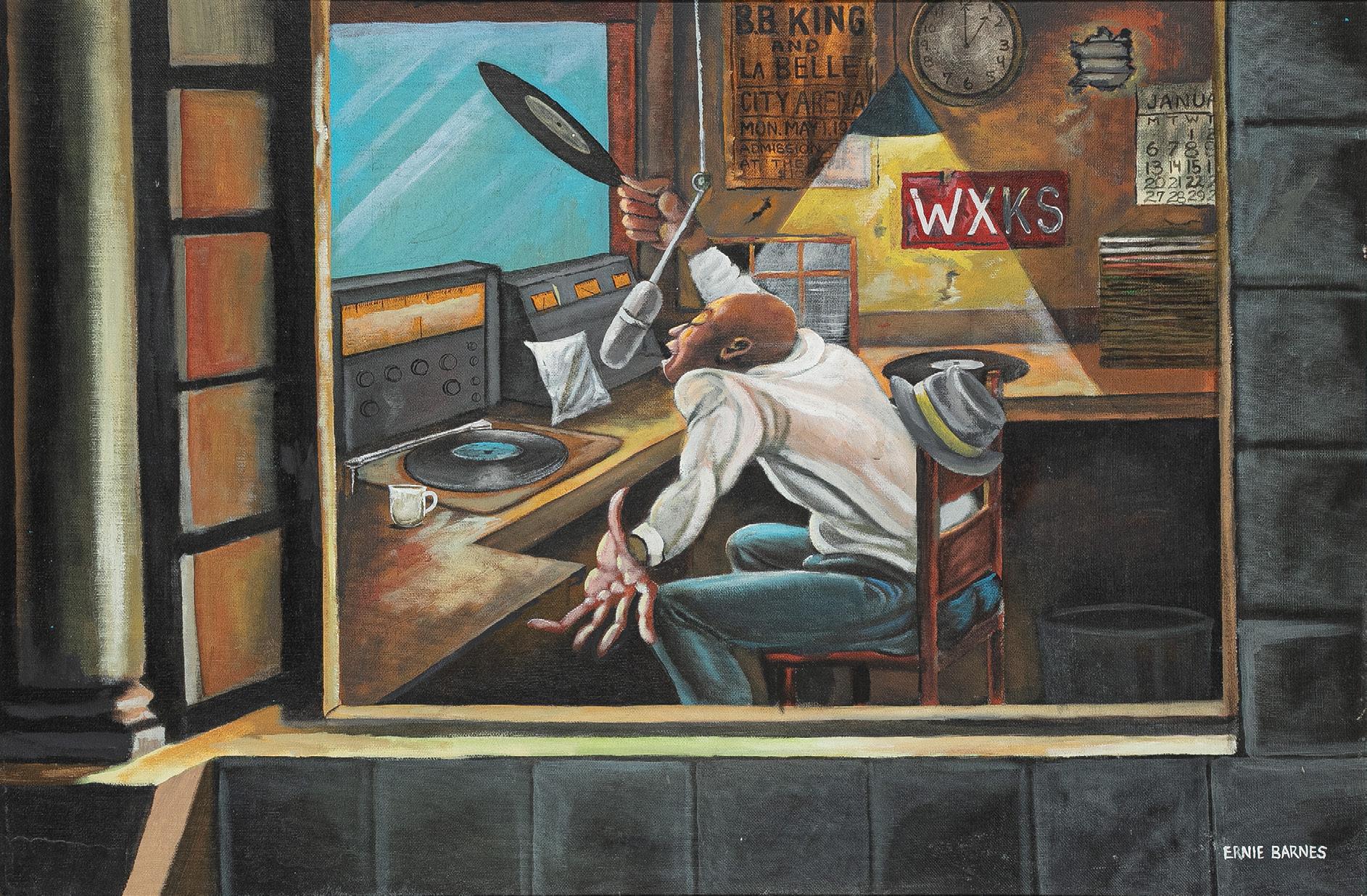
Romare Bearden (1911-1988)
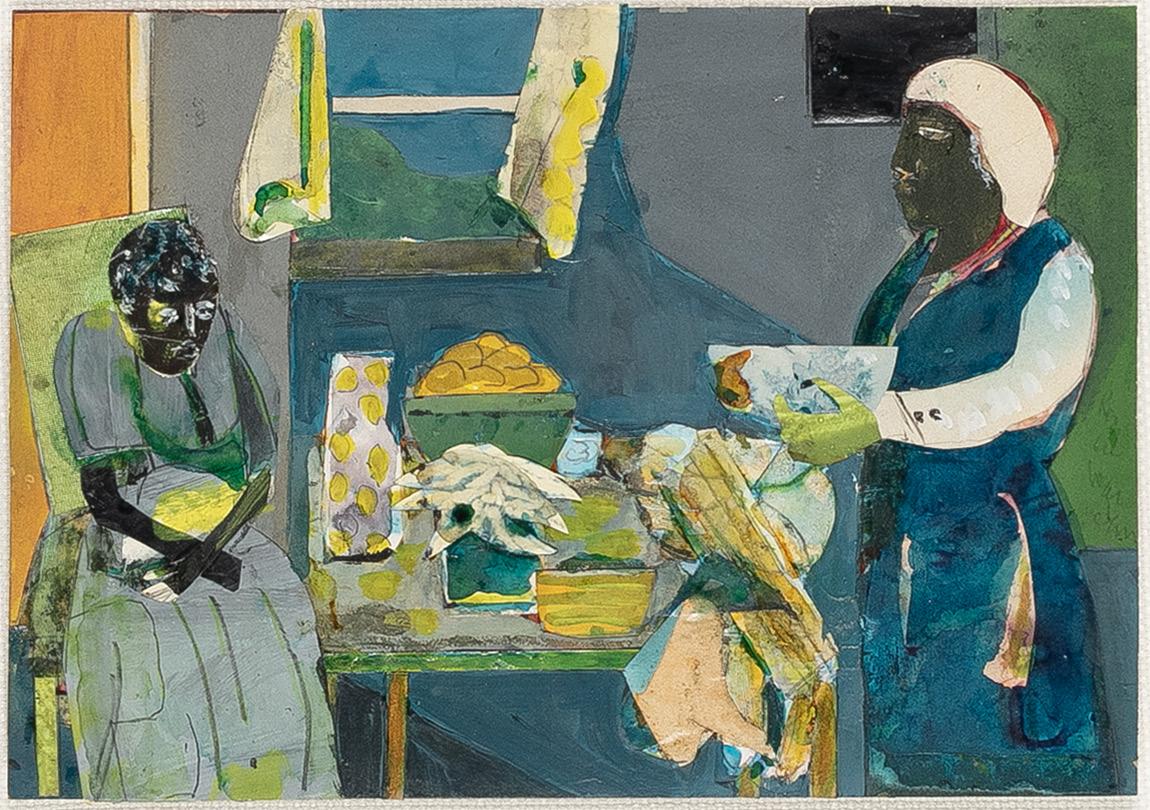
Morning collage and acrylic 8 x 12 inches signed
Exhibited: Mint Museum, NC
Mississippi Museum of Art ACA Galleries
Romare Bearden was born in 1911 in Charlotte, North Carolina, but raised largely in New York City. His parents were active participants in the Harlem Renaissance, (his mother was the New York editor of the Chicago Defender), which provided the artistic and intellectual foundation for him to emerge as an artist of genuine talent, versatility, and conviction.
Bearden studied at New York University, the Art Students League with George Grosz, and Columbia University. He was involved with the earliest incarnation of the Harlem Artists Guild and Charles Alston’s 306 group. After serving with the army, he was able to travel to Paris and study at the Sorbonne. When he returned from his travel, his early Social Realist works gradually gave way to cubism in the mid 1940’s while he began exploring religious and mythological themes.
In the early 1960’s, Bearden joined the artist collective Spiral, and began making collages as “an attempt to redefine the image of man in terms of the black experience.” Bearden’s early collages were composed primarily of magazine and newspaper cuttings. Together with his Projections, which were enlarged photostatic copies of these collages, they mark a turning point in his career and received critical praise.
Bearden achieved success in a wide array of media and techniques, including watercolor, gouache, oil, drawing, monotype, and edition prints. He also made designs for record albums, costumes and stage sets, and book illustrations. Bearden opened Cinque Gallery with fellow artists Norman Lewis and Ernest Crichlow and was founding member of the Studio Museum in Harlem and the Black Academy of Arts and Letters. His work is included in major public collections including the Metropolitan Museum of Art, NY; Whitney Museum of American Art, NY; Philadelphia Museum of Art, PA; Museum of Fine Arts, Boston; and the Studio Museum in Harlem, NY.
Recent exhibitions of his work include: Romare Bearden: Artist as Activist and Visionary, Long Island Museum, Stony Brook, NY, 2024; Romare Bearden: Resonances, Saint Louis Art Museum, 2024; Something Over Something Else: Romare Bearden’s Profile Series, The Cincinnati Art Museum, Cincinnati, OH, 2020; and The Harlem Renaissance and Transatlantic Modernism, Metropolitan Museum of Art, New York,NY, 2024 (group.)
Romare Bearden (1911-1988)
Mecklenburg Autumn, 1979
color lithograph on wove paper
23-1/8 x 18 inches
signed and numbered 21/175
Published by London Arts, Inc.
GG#90
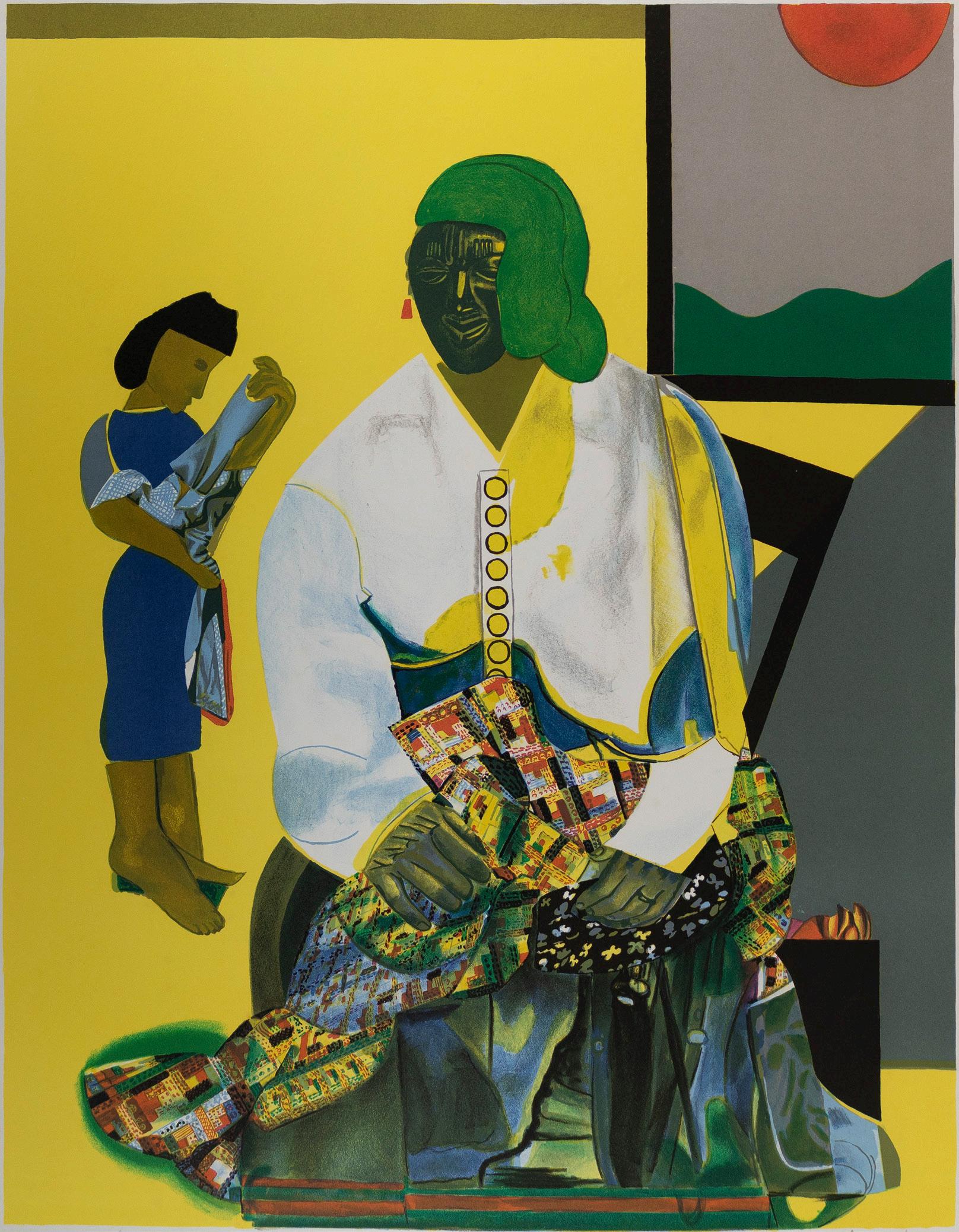
Elizabeth Catlett (1915-2012)
Elizabeth Catlett was born in Washington D.C. in 1915, and went on to attend Howard University where she studied design, printmaking and drawing. She continued her graduate work at the University of Iowa School of Art and Art History, and in 1940 became the first African American student to receive an M.F.A. in sculpture from the school. Grant Wood instilled in her the idea of working with subjects that she, the artist, knew best, and so, she was inspired to create the sculpture Mother and Child in 1939 for her thesis. This limestone sculpture won first prize in its category at the American Negro Exposition in Chicago, 1940.
Eager to continue her education, she studied ceramics at the Art Institute of Chicago (1941), lithography at the Art Students League of New York (194243), and independently with sculptor Ossip Zadkine in New York (1943). In 1946, Catlett received a Rosenwald Fellowship that allowed her to travel to Mexico City with her husband, Charles White, where she studied wood carving with Jose L. Ruiz and ceramic sculpture with Francisco Zuniga. There, she worked with the Taller de Grafica Popular, (People’s Graphic Arts Workshop), a group of printmakers dedicated to using their art to promote social change. The TGP inspired her to reach out to the broadest possible audience, which often meant balancing abstractionwith figuration. After settling in Mexico and later becoming a Mexican citizen, she taught sculpture at the National Autonomous University of Mexico in Mexico City until retiring in 1975.
Catlett’s work has exhibited widely. The Art of Elizabeth Catlett: From the Collection of Samella Lewis was presented at the University of Delaware, Sep 3-Dec 6, 2019; and her work is found in many important collections including the Smithsonian American Art Museum, Washington D.C.; Museum of Modern Art, NY; the Metropolitan Museum of Art, NY, and the Schomburg Center for Research in Black Culture, NY.
Mother and Child, 1980
sculpture
23 inches (h)
2-3/4 (base)
Exhibited:

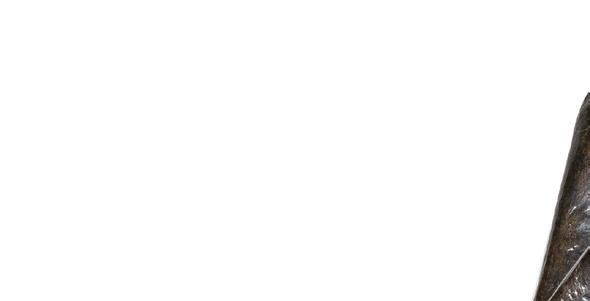
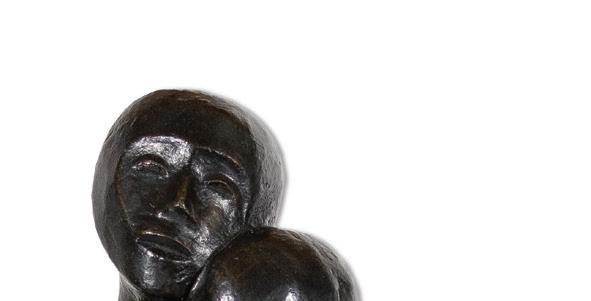
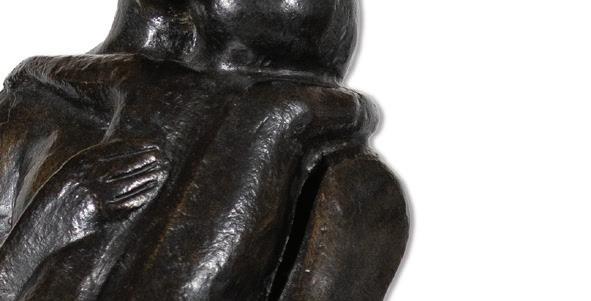

Blaffer Museum of Art, University of Houston, TX
Neuberger Museum of Art, Purchase College,
State University of NY

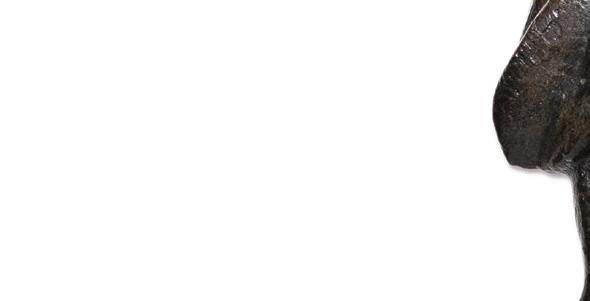
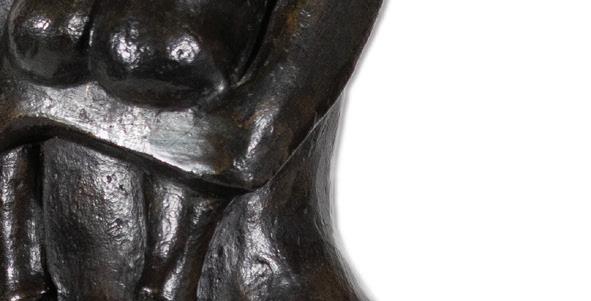

Spelman College Museum of Fine Art, GA

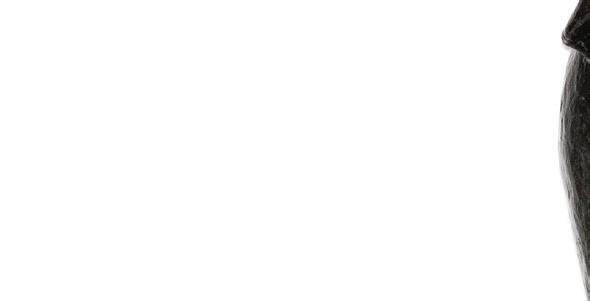




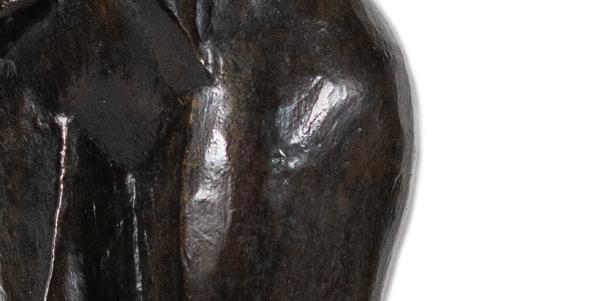
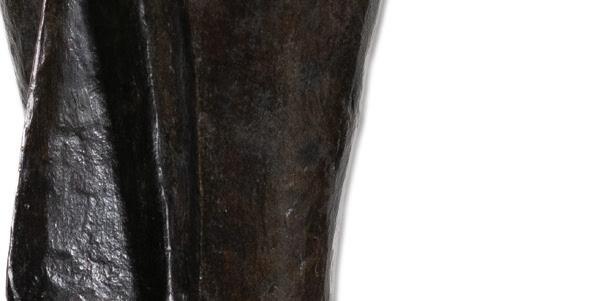
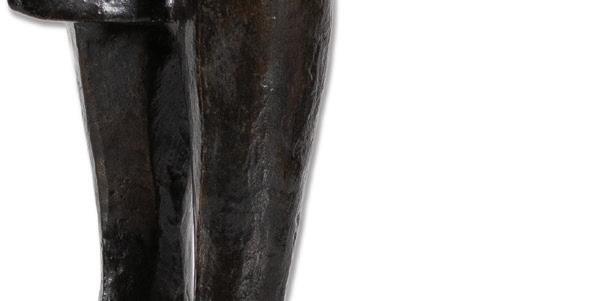
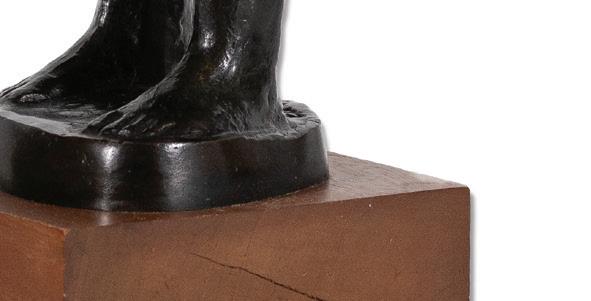
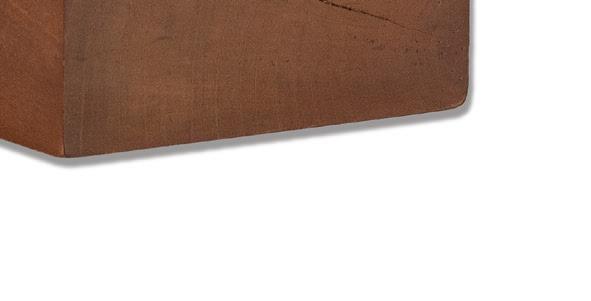



Elizabeth Catlett (1915-2012)
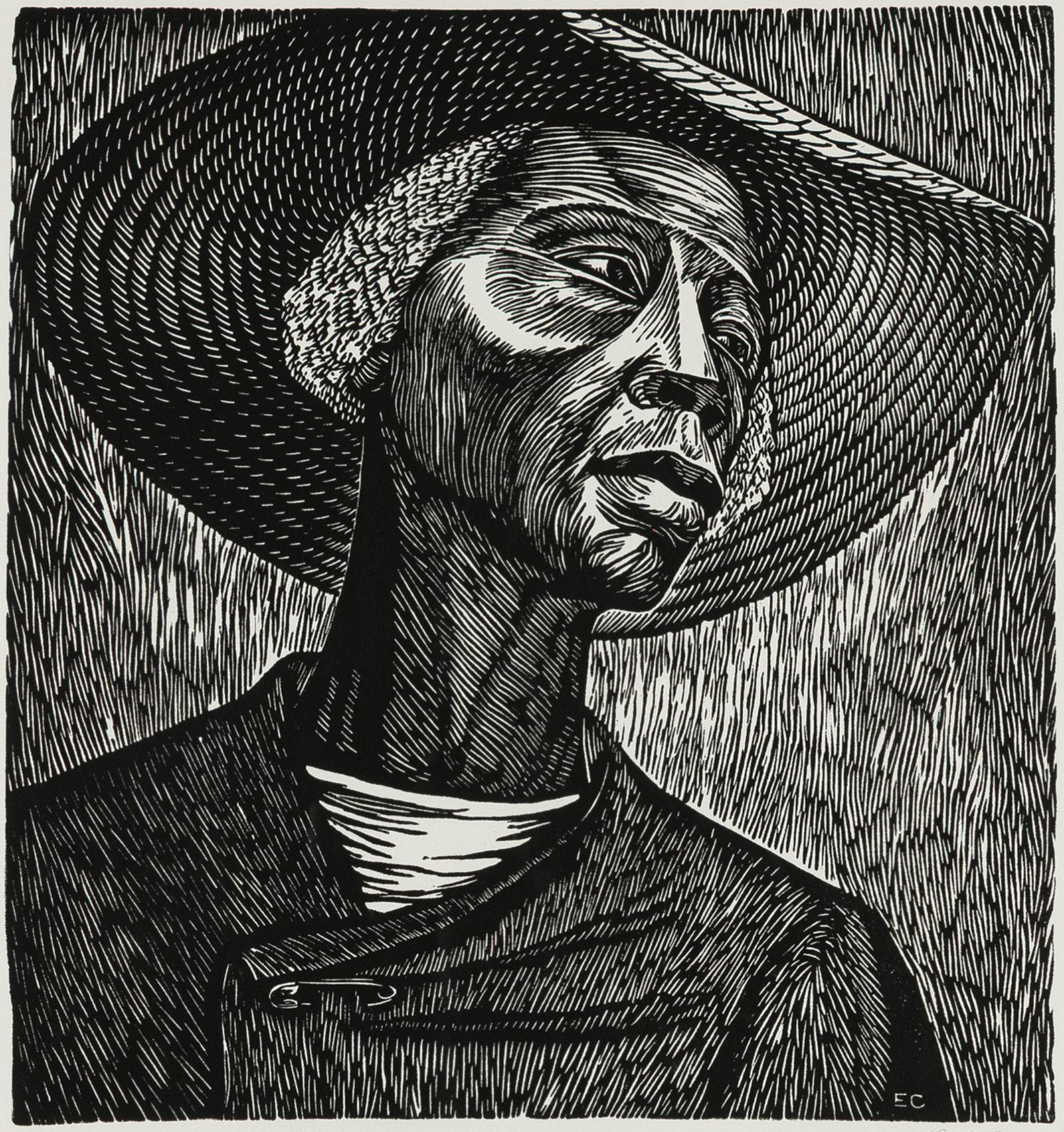
Sharecropper, 1970
linocut in black 17-1/2 x 16-1/2 inches, full margins signed and dated AP
Exhibited:
Reynolds House Museum of American Art, NC
Mint Museum, NC
Art Institute of Chicago
James Denmark (b. 1936)
A gifted athlete, James Denmark was granted a scholarship to study at Florida A&M University, where he met and worked with Samella Lewis. Lewis invited many well-known African American artists to lecture there, and Denmark had the opportunity to meet them and gain insight into their work.
After a short hiatus from school, he enrolled at Pratt Institute of Fine Arts (M.F.A., 1976). He was highly influenced by the colorful collages of Jacob Lawrence, who was teaching at Pratt at that time. Denmark snuck into many of Lawrence’s classes although he was not officially enrolled in them, where Denmark was introduced to the work of Romare Bearden and Al Hollingsworth. It was about this time Denmark moved away from charcoal and watercolor works and committed himself to the art of collage.
Denmark was represented by Nigel Jackson at the Acts of Art Gallery, where he had four solo shows in the early 1970s. Denmark participated in several historically significant exhibitions, including Black Artists/South, Huntsville Museum of Art, AL, 1979; Afro-American Artists, New York and Boston, Boston Museum of Fine Arts, 1970; and Contemporary Black Artists, Museum of Art, Rhode Island School of Design, Providence, 1969.
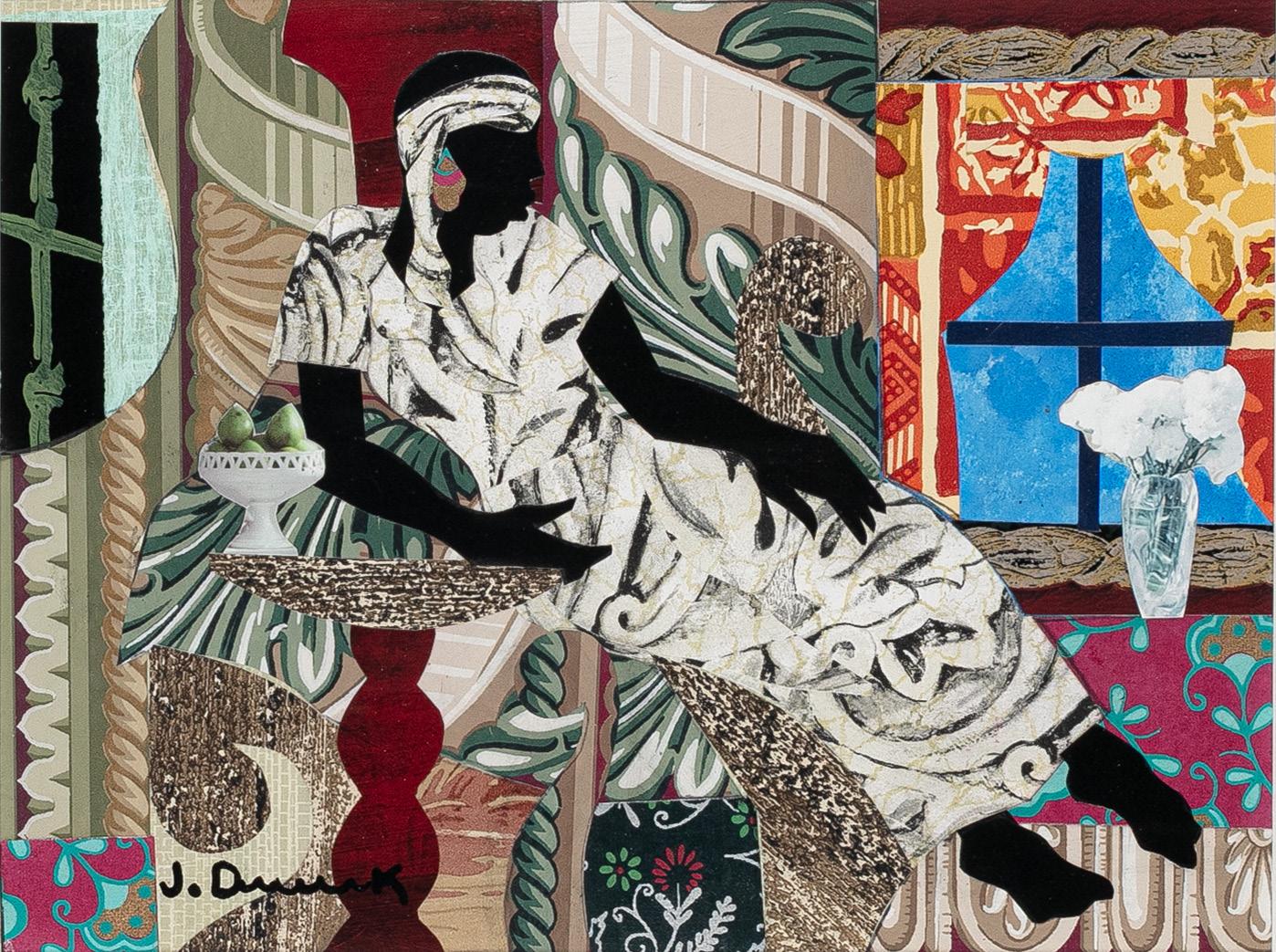
Relaxed Pose, mixed media 8-1/4 x 11 inches signed
David Driskell (1931-2020)
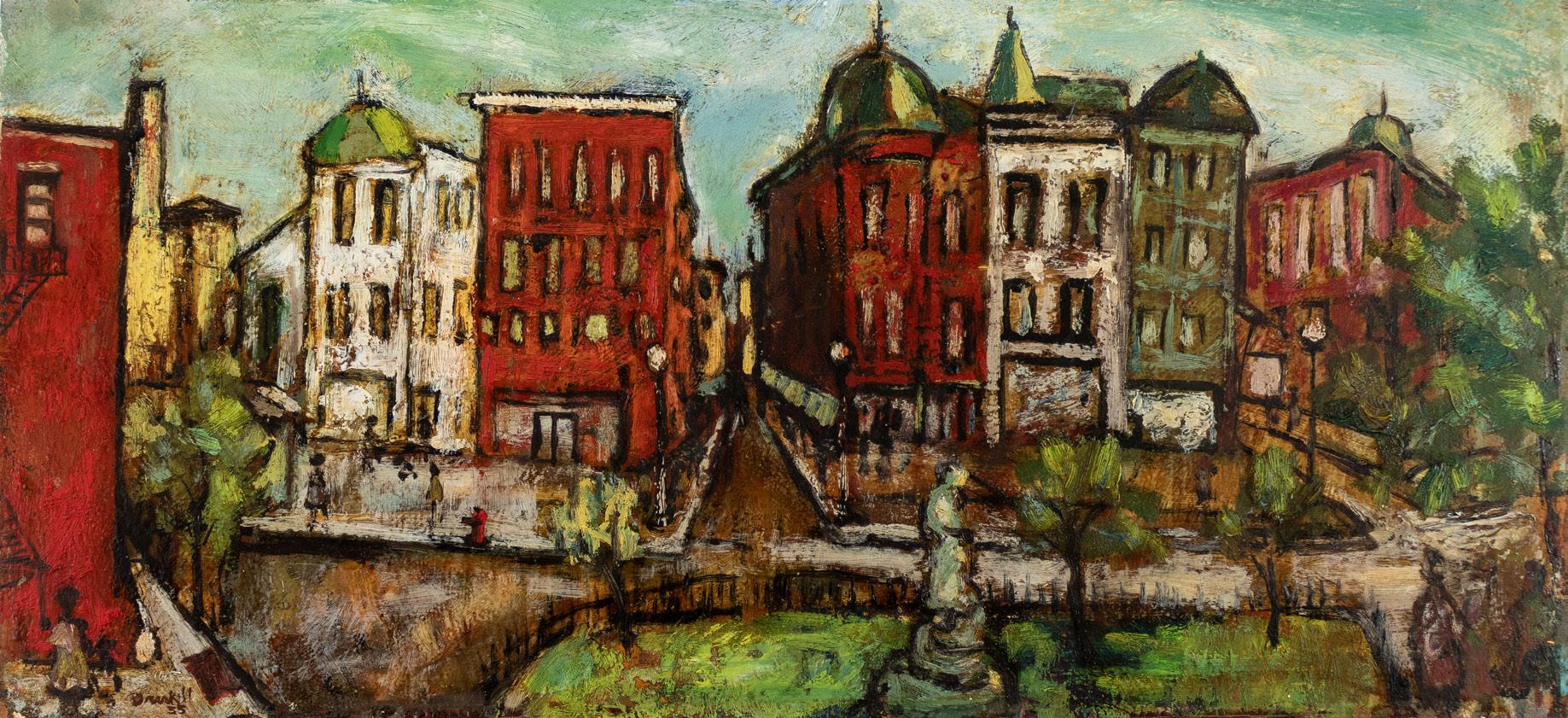
Street Scene (Washington, DC), 1955 oil on canvas
12 x 26 inches signed and dated titled and signed verso
Artist, curator, scholar and distinguished professor emeritus David Driskell was born in Eatonton, GA in 1931. He completed the art program at the Skowhegan School of Painting and Sculpture, Maine, in 1953, and went on to attend Howard University. He received his MFA from the Catholic University of America, Washington D.C. Prof. Driskell explored post-graduate study in art history at the Netherlands Institute for the History of Art in The Hague. Driskell began his career as an educator at Talledega College in 1955. In 1976, Driskell curated the important exhibition, Two Centuries of Black American Art: 1750- 1950, which was held at the Los Angeles County Museum of Art. He has authored multiple exhibition catalogs throughout his career. In 1977, he joined the faculty at the University of Maryland, College Park, where he remained for the rest of his career. Upon his retirement, the David C. Driskell Center was established to honor his legacy and dedication to preserving the rich heritage of African American visual art and culture.
As an artist, he worked in collage, mixed media, and print-making. Driskell’s work has recently been included in David Driskell: Artist & Scholar of the African American Experience, Morris Museum of Art, GA, Oct. 2019 - Jan. 2020; David Driskell: Resonance, Paintings 1965-2002, DC Moore Gallery, NY, 2019.
His work has also been featured in the following group exhibitions: Riffs and Relations: African American Artists and the European Modernist Tradition, Phillips Collection, Washington D.C., Feb. 29 - May 24, 2020; Tell Me Your Story, Kunsthal Kade, Amsterdam, Feb. 8 - May 17, 2020; The Seasons, Nassau County Museum of Art, NY, Nov. 16, 2019 - March 1, 2020.
In 2025, the Frist Art Museum, Nashville, TN in association with the David C. Driskell Center presented David C. Driskell & Friends: Creativity, Collaboration, and Friendship, an exhibition that traced the artist’s career and his relationships with contemporaries. It was shown concurrently with Kindred Spirits: Intergenerational Forms of Expression, 1966–1999, an exhibition that explored the legacy and influence of Fisk University’s art department, which Driskell led from 1966 to 1976.
Ed Dwight (b. 1933)
The Hands That Picked Cotton Now Cast Their Ballots, 1990 cold-painted bronze 21-1/2 x 12 x 8-1/2 inches signed and dated
Ed Dwight was born in 1933 in Kansas City, KS to Georgia Baker Dwight and Edward Dwight Sr., who played second base and centerfield for the Kansas City Monarchs and other Negro league teams from 1924 to 1937. He received a scholarship to attend the Kansas City Art Institute, but opted to study engineering at Metropolitan Community College, KS. After graduation, he enlisted in the United States Air Force where he became a test pilot and eventually was selected by the Kennedy administration as the first African American astronaut trainee. He was not selected by NASA, however, and resigned from the Air Force in 1966 due to racial politics.
After his resignation, Dwight pursued a variety of occupations but returned to school to study sculpting at the University of Denver where he learned to operate Denver’s metal casting foundry. He was commissioned by the Colorado Centennial Commission to create a series of bronzes titled, Black Frontier Spirit in the American West. The series depicted the contribution of African Americans to the opening of the West. With the support of the National Parks Service, this series of 50 bronze sculptures was on exhibit for several years throughout the U.S.
His next series of over 70 bronzes, the Evolution of Jazz, opened at St. Louis’s historic Old Courthouse and traveled nationally for 5 years. Dwight operates a 30,000 sq. ft. studio/gallery and foundry in Denver. He has created 129 memorial sculptures and over 18,000 gallery pieces, including paintings and sculptures.
REF: Ed Dwight Studios,
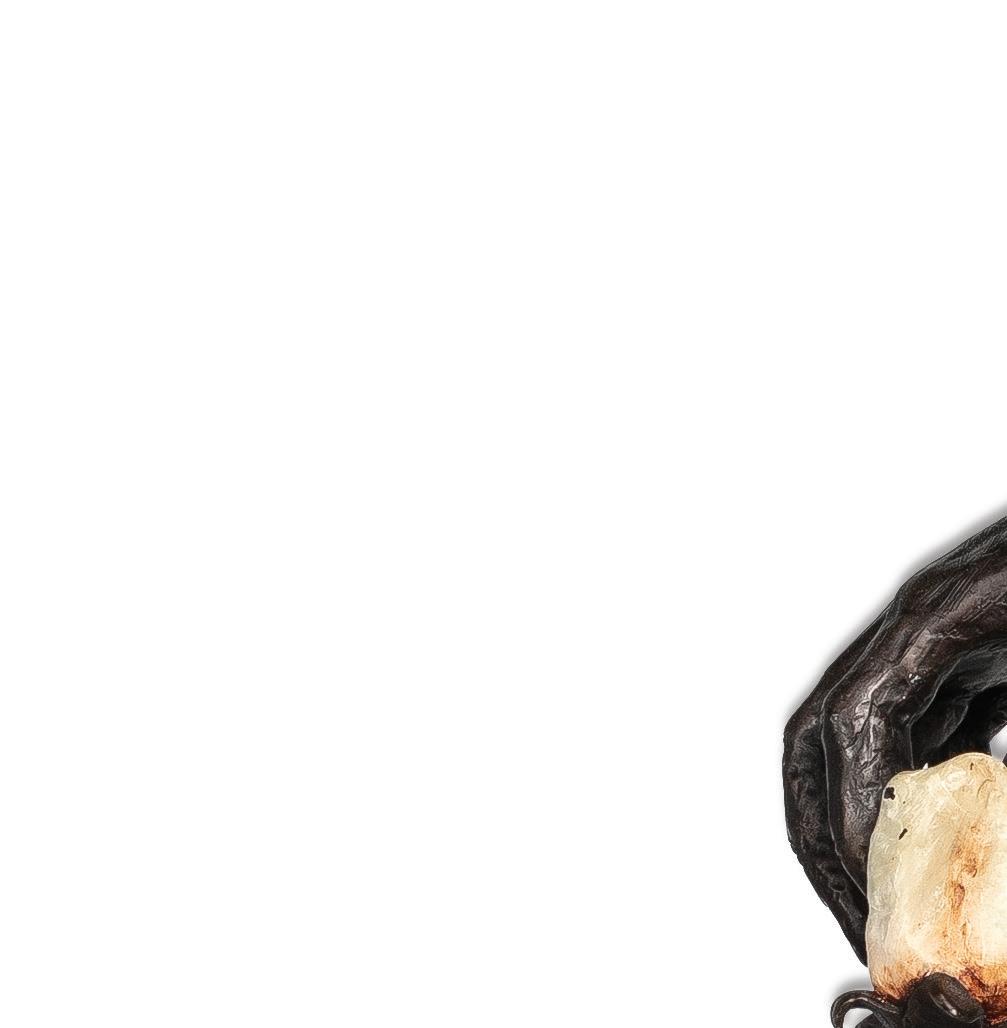
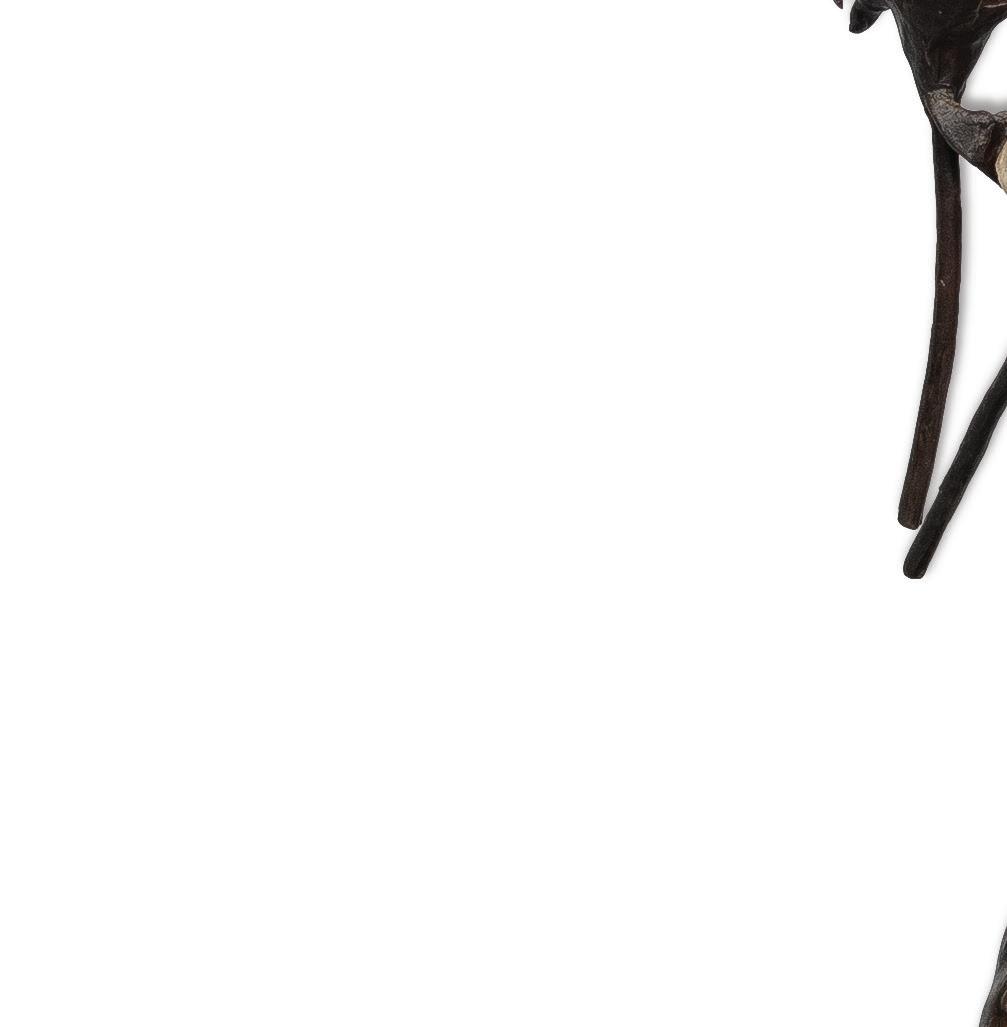
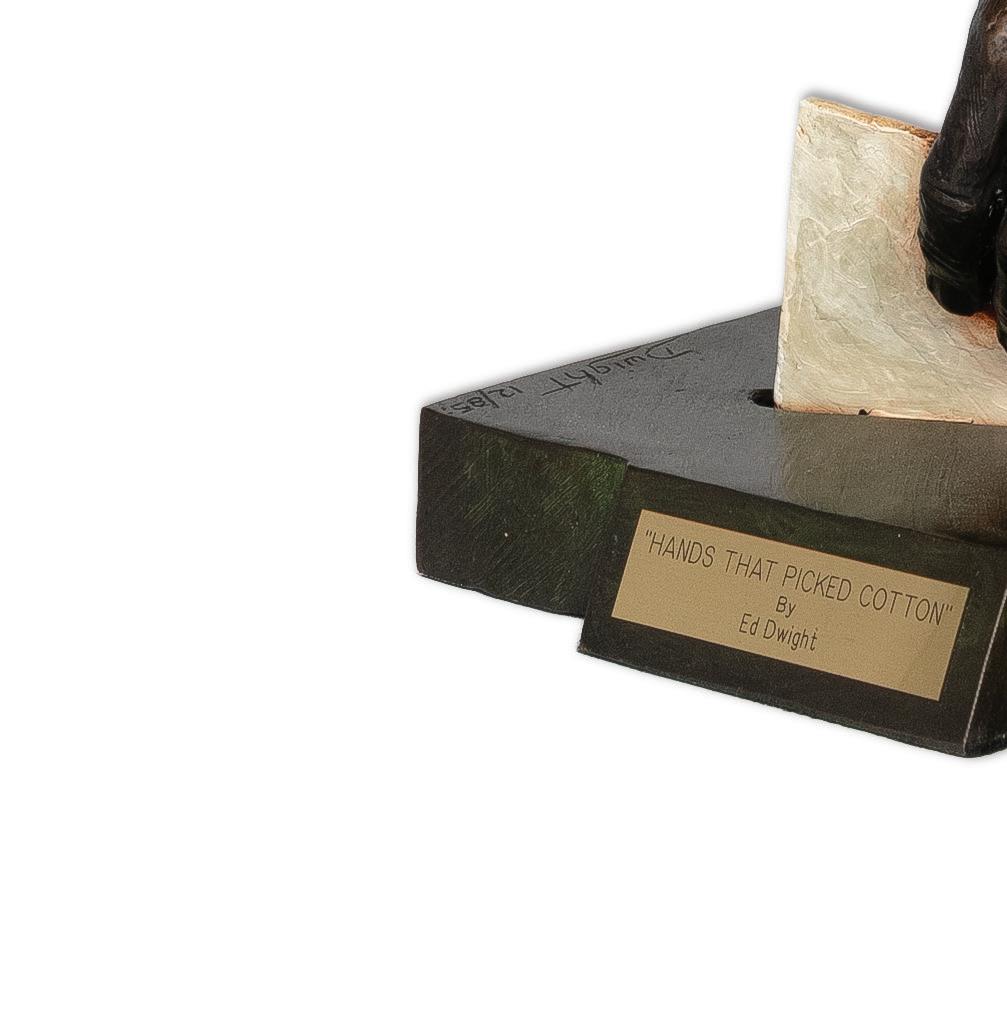
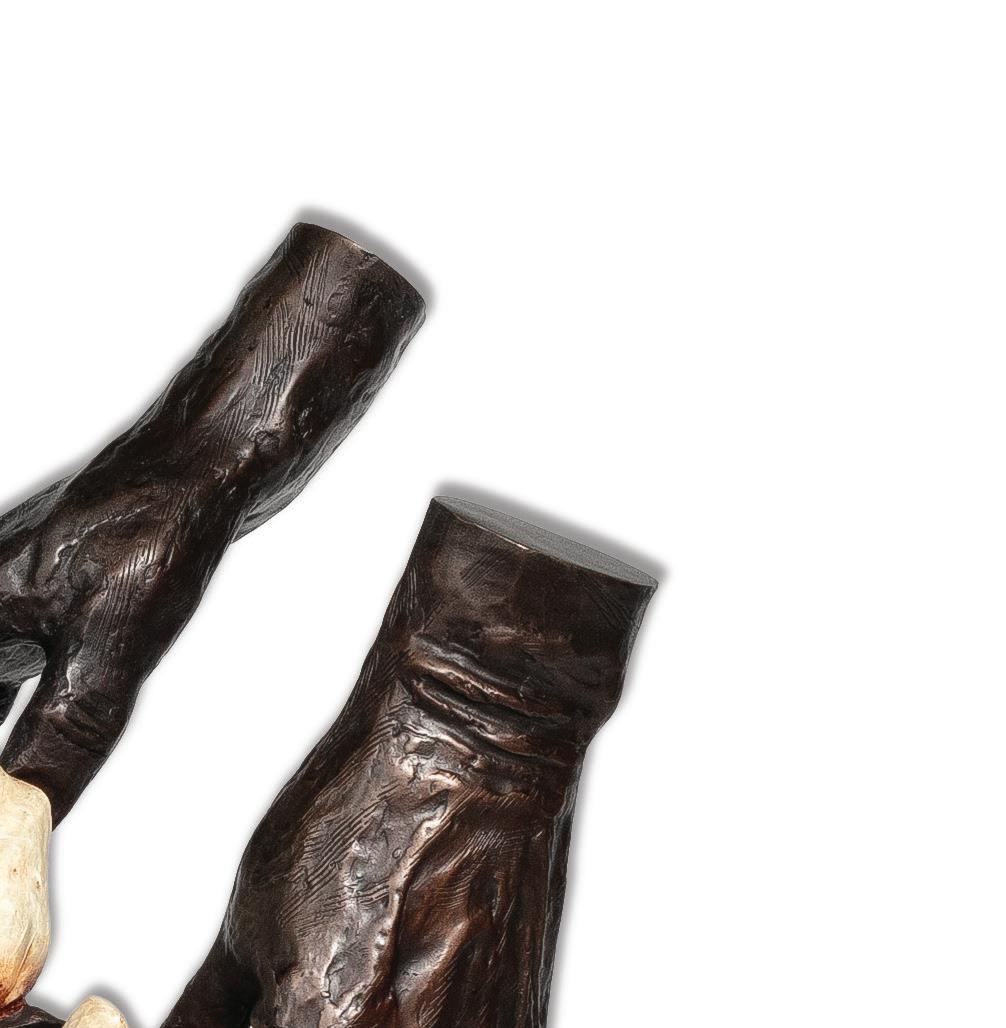
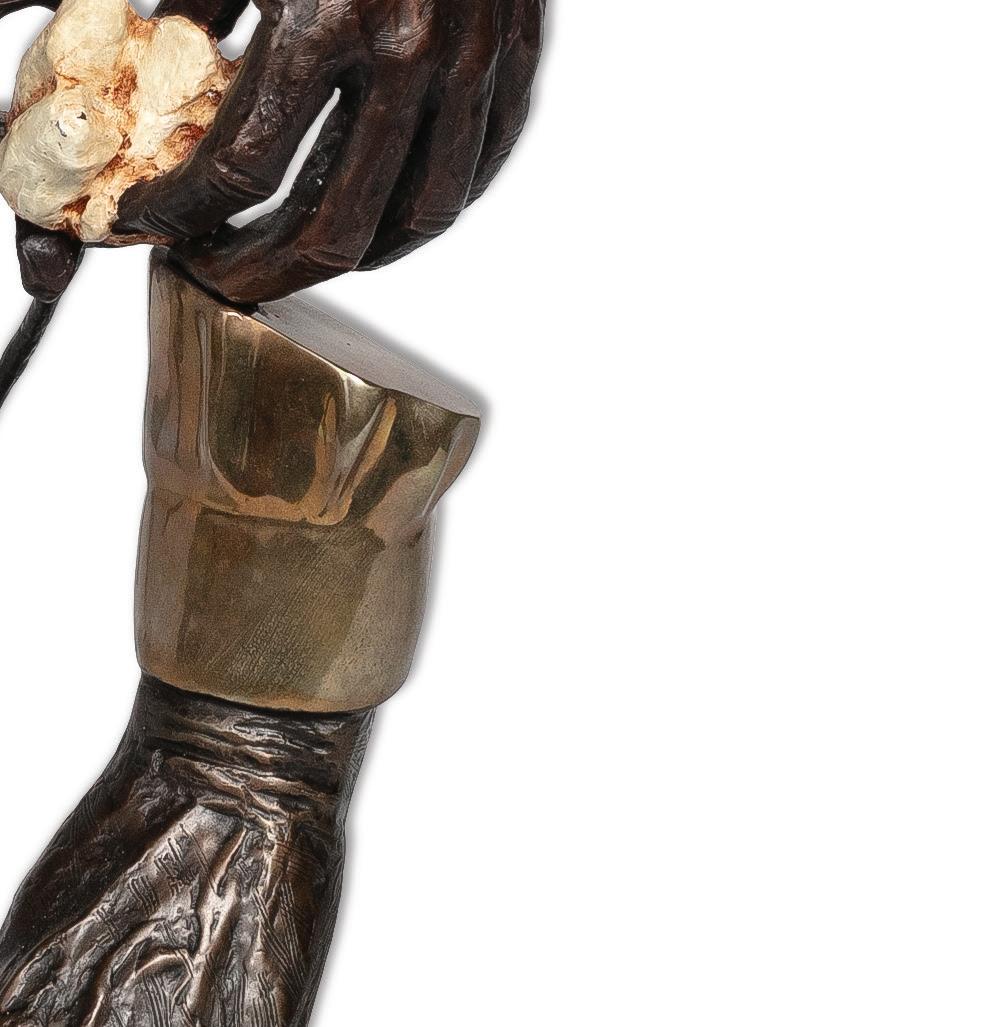
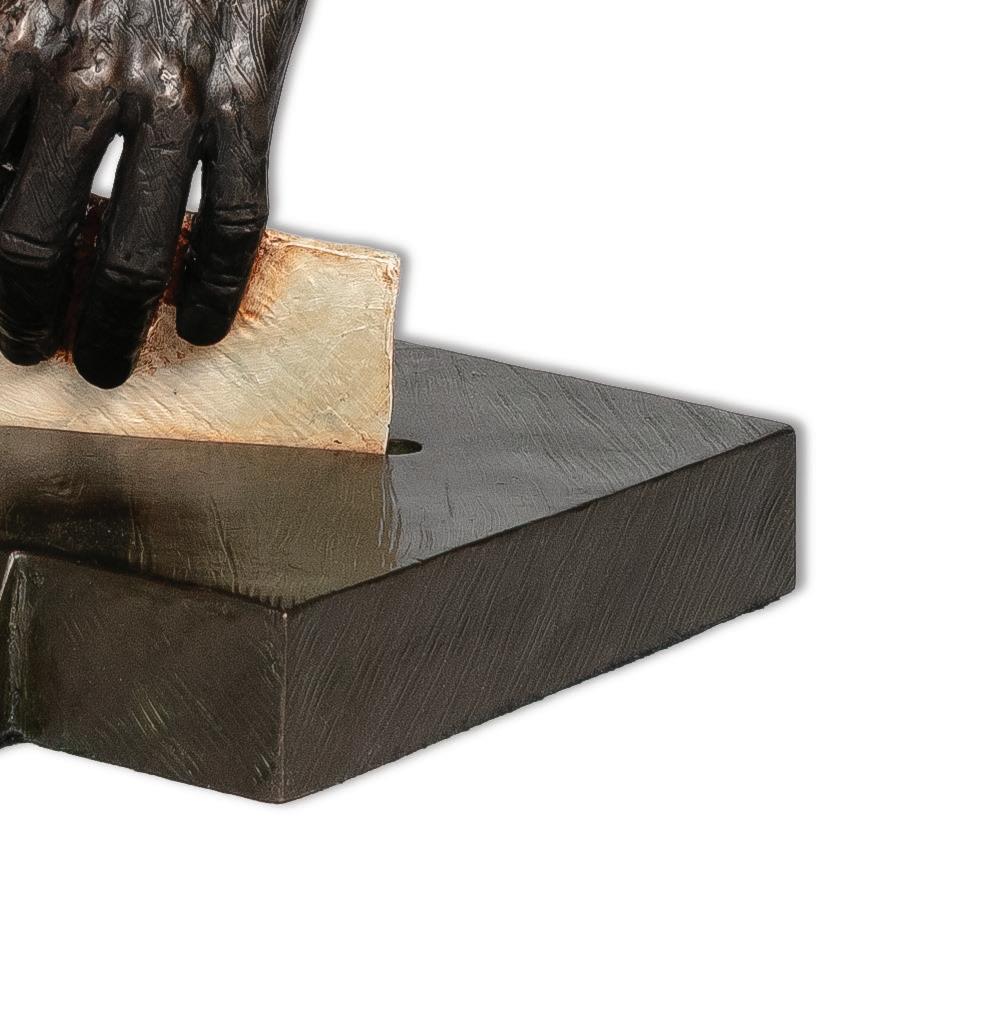


Paul Goodnight (b. 1946)
Four Seasons of Unbreakable Spirits, 2023 oil on canvas
58-1/2 x 46-1/2 inches signed
Paul Goodnight was born in Chicago in 1946 and raised by a foster family in Boston and Connecticut. After high school, he was drafted into the Army and sent to fight in Vietnam, a harrowing experience that left him temporarily unable to speak. In the aftermath of war, Goodnight turned to painting as a form of healing. Through art, he found not only his voice but also his purpose.
Determined to pursue a career in art, Goodnight enrolled at the Vesper George School of Art while also taking English classes at a local community college. In 1976, he earned his B.A. from the Massachusetts College of Art. His early years as an artist were marked by steady growth and public recognition. By 1984, one of his paintings appeared on an episode of The Cosby Show, introducing his work to a national audience.
Goodnight’s creative journey has taken him around the world, studying artistic traditions in Africa, the Caribbean, Russia, and Asia. He also worked under the guidance of respected artists such as Allan Rohan Crite and John Biggers, further enriching his visual language. His work, deeply influenced by African iconography and cultural symbols, expresses a profound sense of history, resilience, and shared humanity.
Today, Goodnight’s paintings are held in private collections of luminaries including Maya Angelou, Wesley Snipes, and Samuel L. Jackson, and institutions such as the Smithsonian. He was commissioned to create artwork for the 1996 Olympic Games in Atlanta and later designed the official poster for the 1998 FIFA World Cup.
Goodnight continues to explore themes of identity, culture, and spirit through a wide range of media including acrylics, pastels, and mixed media. His unique aesthetic philosophy and commitment to storytelling through art have made him a vital voice in contemporary American art.
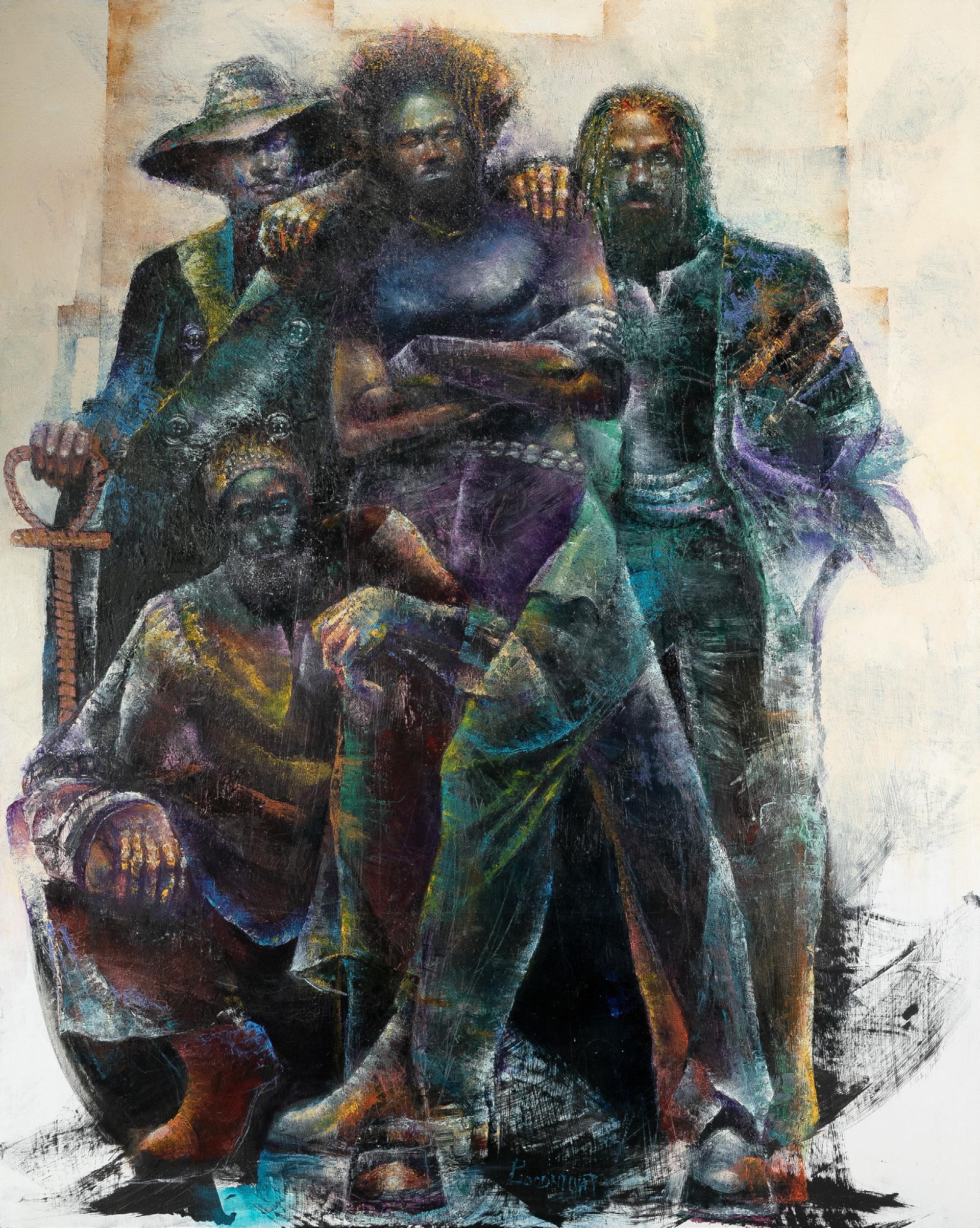
Paul Goodnight (b. 1946)
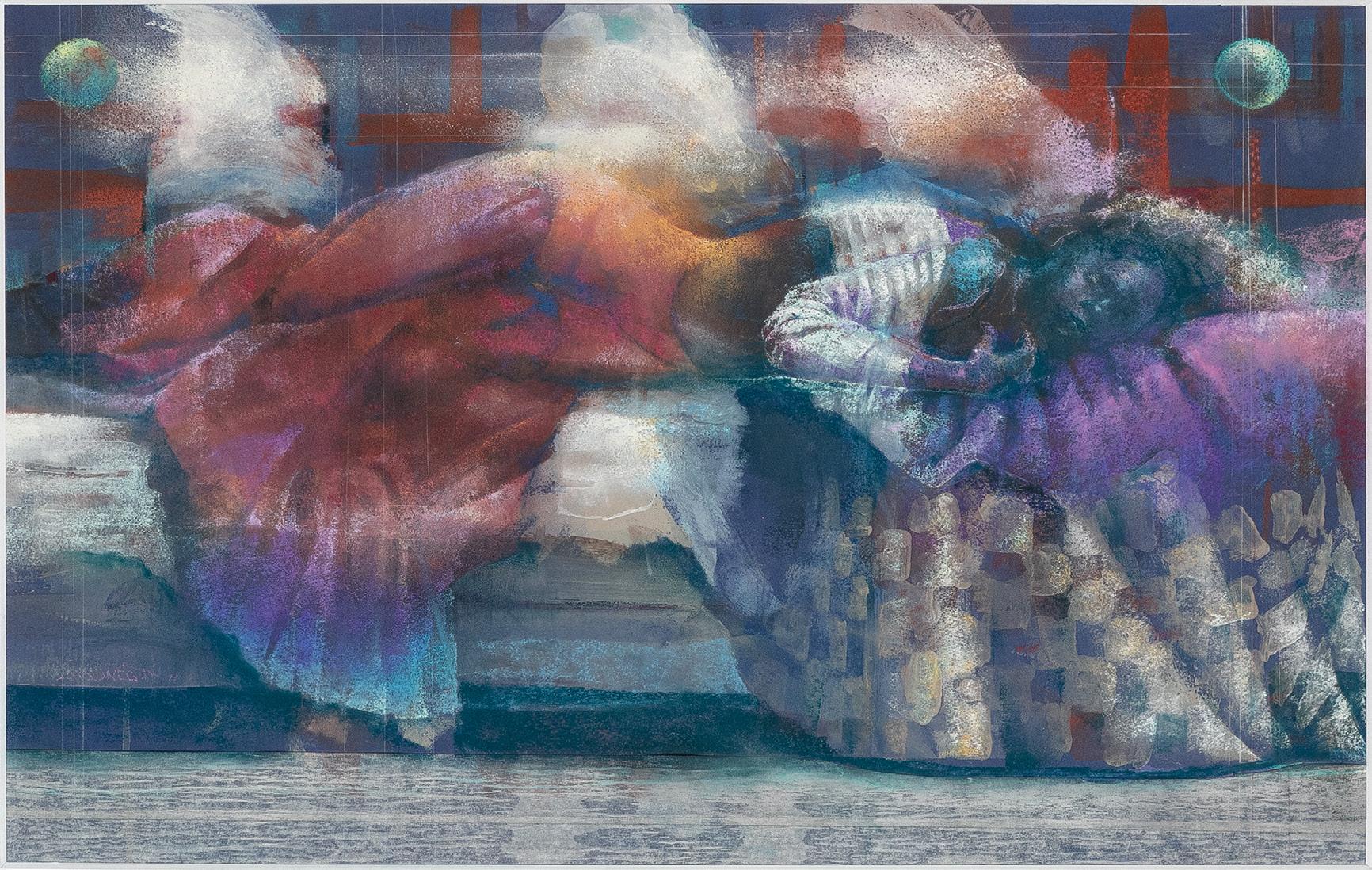
Slumber, 2024 pastel and gouache on board 19 x 26-1/2 inches
Lois Mailou Jones (1905-1998)
Paris, 1937
oil on canvas laid on board 18-1/4 x 24 inches
signed (SOLD)
Lois Mailou Jones was raised in Boston by working-class parents who instilled in her the values of education, discipline, and hard work. After graduating from the School of the Museum of Fine Arts, she began her career designing textiles for New York firms. In 1928, she pivoted toward education, accepting a teaching position at Palmer Memorial Institute in North Carolina.
At Palmer, Jones founded the art department, coached the basketball team, taught folk dance, and played piano at Sunday services—reflecting both her versatility and dedication to community. Just two years later, she was invited to join the art department at Howard University in Washington, D.C., where she would go on to teach from 1930 to 1977, shaping generations of African American artists, including David Driskell, Elizabeth Catlett, and Sylvia Snowden.
As her teaching career flourished, so too did her artistic practice. A pivotal sabbatical in Paris exposed her to African tribal art, a popular subject in French galleries, which she began incorporating into her own work. The city offered a kind of creative and social freedom she had never experienced, an environment where race seemed irrelevant.
In 1953, she married Haitian graphic designer Louis Vergniaud Pierre-Noël. Their annual trips to Haiti further influenced her palette and patterning, as she absorbed the vibrant colors and dynamic forms of Haitian art.
In 1970, Jones was commissioned by the U.S. Information Agency to serve as a cultural ambassador to Africa. She visited 11 countries, delivering lectures, engaging with artists, and touring museums. These experiences deeply informed the African-inspired themes of her later work, especially the paintings she produced between 1971 and 1989.
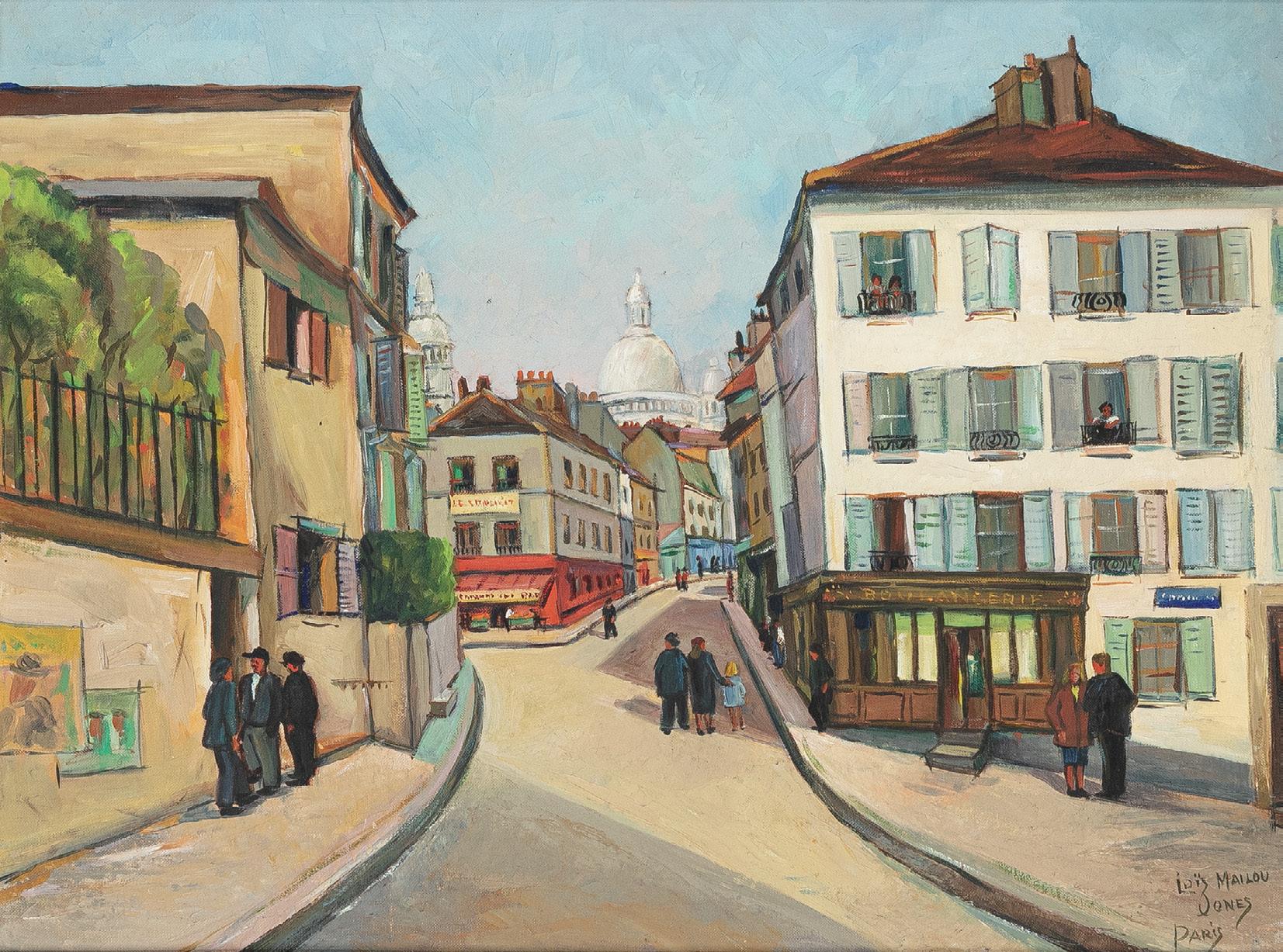
Jacob Lawrence (1917-2000)
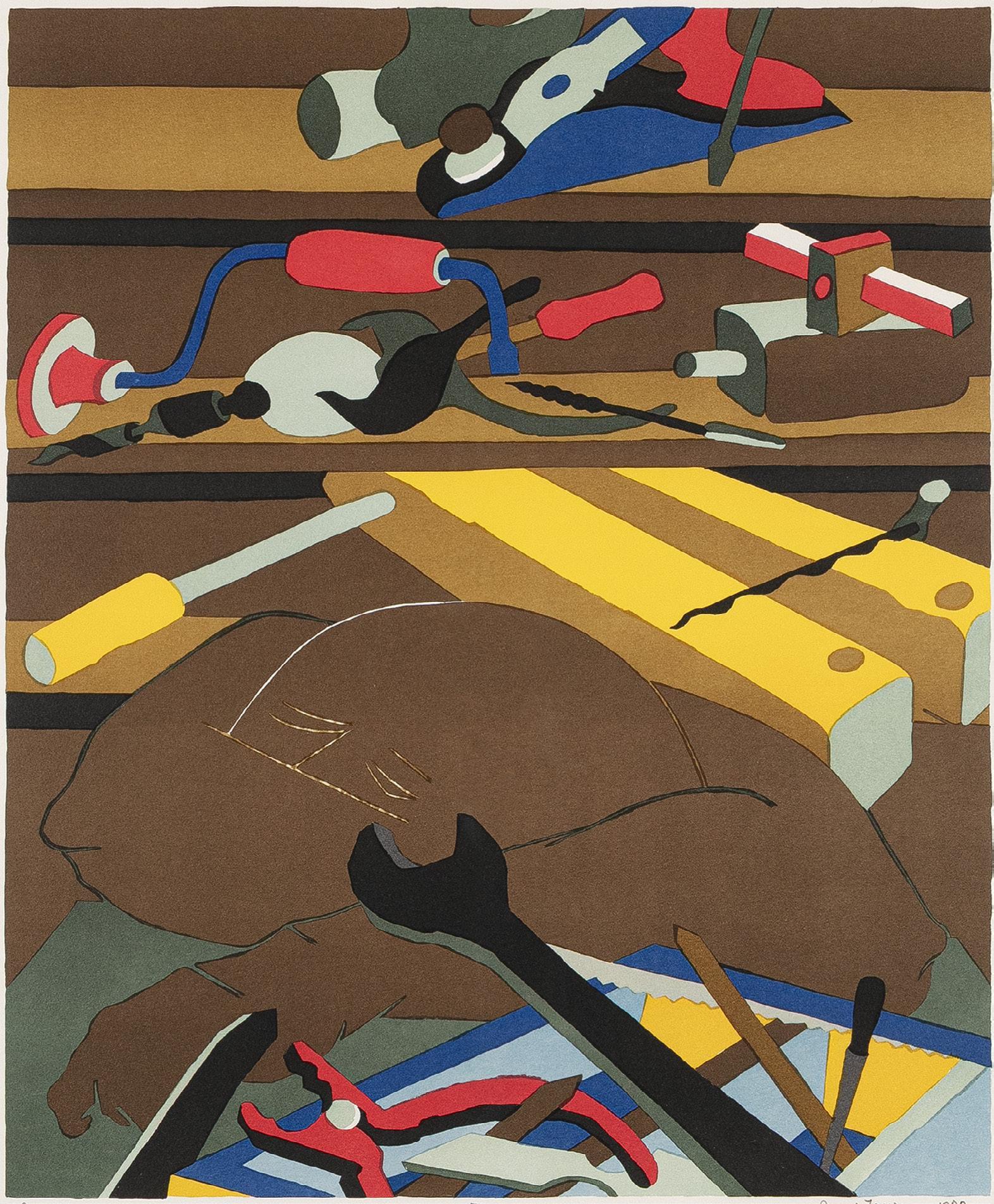
Tools, 1977
offset lithograph on BFK Rives paper from aluminum plates hand-drawn by the artist 21-7/8 x 18-1/8 inches (image)
26 x 21-3/4 inches (sheet)
signed, dated, titled and numbered 63/300 plates destroyed
Published by Himan Brown, NY; printed by George C. Miller & Son, NY (Burr Miller, Master Printer)
Jacob Lawrence was born in Atlantic City, New Jersey in 1917 and raised in Philadelphia and Harlem. As a teenager, Lawrence had been uprooted from a childhood spent in Philadelphia when his mother brought her children to live with her in Harlem. She enrolled him in the after-school arts program directed by James Lesesne Wells. Charles Alston became his mentor. Here, he was able to create voraciously - he created elaborate paper mâché masks and three-dimensional models of Harlem. He read about master painters and focused his attention on patterns and colors.
Lawrence began attending high school, but quit after two years, worked odd jobs, and completed a stint with the CCC digging ditches during the Depression. He re-discovered Alston who was now teaching in a WPA art center, who directed him to the Harlem Community Art Center, which was run by Augusta Savage. She was able to get him admitted as an easel painter by the time he turned 21. He eventually found studio space with fellow artists Ronald Joseph, Romare Bearden, and Claude McKay. Lawrence was a regular at Professor Charles Seifert’s discussions of African and African American history at the 135th St. branch of the NYPL.
As an artist, Lawrence synthesized the events, meetings, discussions, experiences, and moments of his life onto the canvas and into his first narrative series (and the works to come). In 1936-38, he produced a series of works, The Life of Toussaint L’Ouverture. For him, it was not sufficient to produce one defining work on the life of such an important historical figure, so he created 41 paintings. Lawrence also created series on Frederick Douglass in 1939; Harriet Tubman, 1940; John Brown; and the Migration Series. Each series was eventually transposed as prints in an effort to make art accessible beyond the museum walls.
His work is found in the collections of MOMA, NY; National Academy of Design, NY; National Gallery, Washington D.C.; The Phillips Collection, Washington D.C.; the Museum of Fine Arts, Boston; among others.
Hughie Lee-Smith (1915-1999)
Lee-Smith was born in Eustis, Florida in 1915, and raised in Atlanta and Cleveland, Ohio. He knew from an early age that art was his mission. His mother encouraged his growing talent by enrolling him in an art class for gifted students at the Cleveland Museum of Art. At twenty years old, he won a Scholastic magazine competition that allowed him to study at the Art School of the Detroit Society of Arts and Crafts. He also studied at the Cleveland Institute of Art (1938); and at Wayne State University (1952-1953), he studied art, theater, and dance. Throughout his career, he taught at several distinguished institutions including the Karamu House, Cleveland (late 1930’s), Princeton Country Day School, NJ (1963-65), Howard University, Washington D.C. (1969-1971), and the Art Student’s League, NYC (1972-1987).
Lee-Smith was employed by the Ohio Works Progress Administration in 1938-1939. At this time, he did a series of lithographic prints and painted murals at the Great Lakes Naval Station in Illinois. The Cleveland Museum recognized him for drawing in 1938 and for printmaking in 1939-1940. His early works were shown mostly in Chicago and Detroit; at the South Side Community Art Center, the Snowdon Gallery, and the Detroit Artist’s Market. He was a regular exhibitor at the National Academy of Design between the years of 1959 and 1976.
Despite many accolades and awards throughout his career, Lee-Smith did not enjoy a major solo exhibition of his work until 50 years after he began painting. The retrospective was held at the New Jersey State Museum in Trenton (1988). Just two years before his death, he was featured at the Ogunquit Museum of American Art in Maine, and in 1994, he was commissioned to paint the official City Hall portrait of former New York City Mayor David Dinkins. He died in Albuquerque, New Mexico in 1999 after a long illness.
His work is included in many major collections including the South Side Community Art Center, Chicago; Howard University; the Detroit Institute of Arts, and Wayne State University. In 2013, the Muskegon Museum of Art in Michigan, organized a solo exhibition of his work from the 1930’s and 40’s titled, Hughie Lee-Smith: Meditations
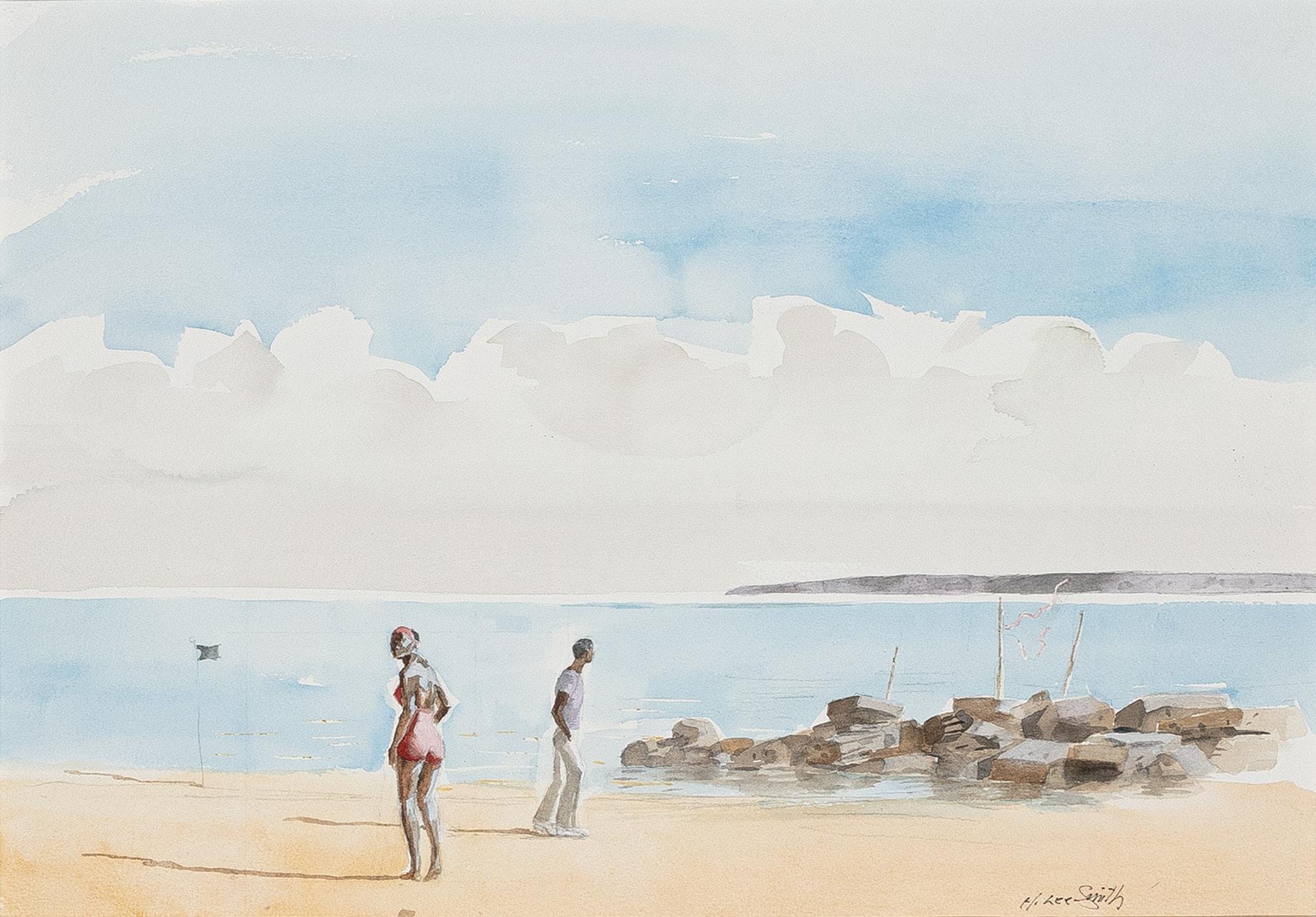
Man and Woman (Bathers), 1994
watercolor on paper
14 x 20 inches
signed
Richard Mayhew (1924-2024)
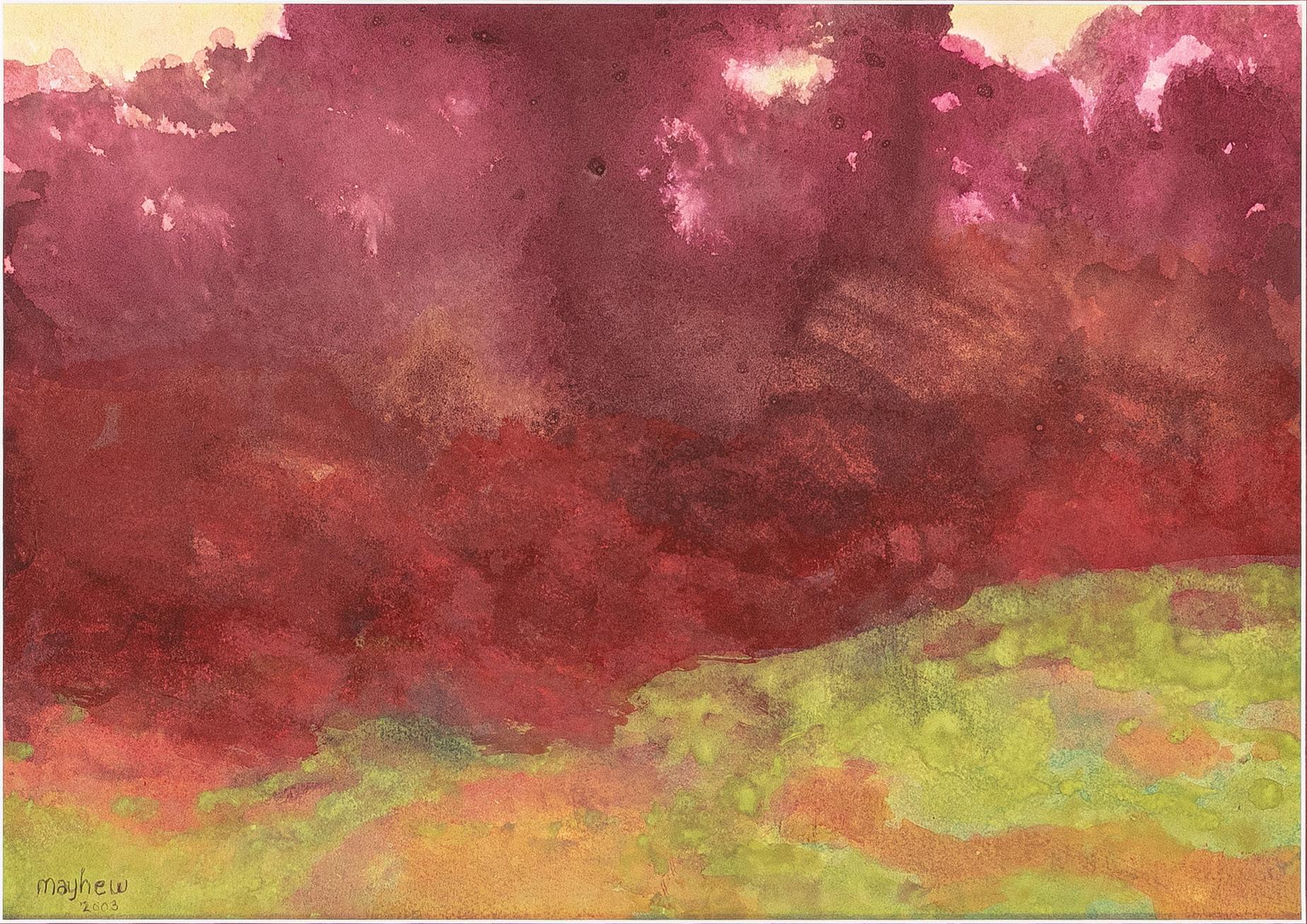
Untitled, 2003 watercolor on paper 14 x 20 inches signed and dated
Widely recognized as one of America’s most important contemporary landscape painters, Mayhew’s luminous, emotionally-charged abstract paintings—which he referred to as ‘mindscapes’— have been the subject of more than forty solo exhibitions over the last fifty years. For Mayhew, the essence of reality was more important than its facts. His paintings were not mere representations of landscapes but transcendent reflections of the emotional and spiritual connections he felt towards the natural world. -from ACA
Galleries website
Mayhew was born in 1924 to parents of African American and Native American descent. He was educated at the Art Students League, NY; Brooklyn Museum Art School; and Pratt University, as well as receiving a degree in art history at Columbia University, NY. During this time, he studied under Edwin Dickinson, Reuben Tam, Hans Hofmann, and Max Beckmann. Mayhew was one of the founding members of the group Spiral, formed in 1963 by Romare Bearden, Norman Lewis, and Hale Woodruff and worked to address issues of civil rights and racial inequality through art.
Mayhew’s first solo exhibition was held at the Brooklyn Museum in 1955 with a second solo exhibition held in 1957 at Morris Gallery, NY, both of which met with much critical success. His work has also been exhibited at the Studio Museum in Harlem; San Jose Museum of Art, CA; Butler Institute of American Art, OH; High Museum of Art GA; and Boston Museum of Fine Arts. In 2009, a retrospective of his work including paintings from the 1950’s through the 1970’s was held at the Museum of the African Diaspora, San Francisco, CA. ACA Galleries (NY) represented Mayhew for over 30 years.
His work is found in the collections of Albion College, Michigan; Brooklyn Museum, NY; Evansville Museum, IN; Midtown Galleries, NY; and the Whitney Museum of American Art, NY.
Richard Mayhew: A Life in Art was held at the ACA Galleries at the beginning of 2025.
Woodrow Nash (b. 1948 )
Adom, stoneware
29 x 26 x11 inches
Woodrow Nash, born in Akron, Ohio in the late 1940s, came of age in a world shaped by sanctified churches, 1950s television, and Black inner-city schools staffed largely by white, middle-class educators. Immersed in art from a young age, he came to maturity during a period when artists pursued raw honesty in their visual language. As a young freelance artist, he painted murals for local institutions and worked as an illustrator, eventually relocating to New York City in 1975 to pursue new creative opportunities.
In New York, Nash made his mark as a fashion illustrator and album cover designer for jazz labels representing legends such as Earl “Father” Hines, Cat Anderson, Arnett Cobb, and Jeff Lorber Fusion. He earned an Associate Degree in Commercial Art from Pels School of Art in 1977 and continued working as a freelance illustrator before returning to Ohio, where he joined Goodyear Aerospace as a technical illustrator. Later, he brought his talents to American Greetings Corporation.
In 1991, Nash moved to Madison, Wisconsin, where he worked as a graphic artist. Though skilled in the new digital tools, he longed for the tactile satisfaction of working with his hands. That desire drew him back to the elemental: clay, earth, and form. “I’m looking for that expression that cuts across a cultural grain,” he says. But rather than following the path of abstraction or surrealism, Nash turned toward the origins of humanity—Africa and global tribal traditions.
Today, Nash is known for his striking figurative sculptures that channel ancestral memory and spiritual grace. Using materials such as stoneware, terracotta, earthenware, and porcelain, his work is fired through diverse methods—electric kiln, pit firing, and the unpredictable beauty of raku. The result is a signature aesthetic he calls “African Nouveau”—a style that merges myth, elegance, and raw emotion into timeless, contemporary form.
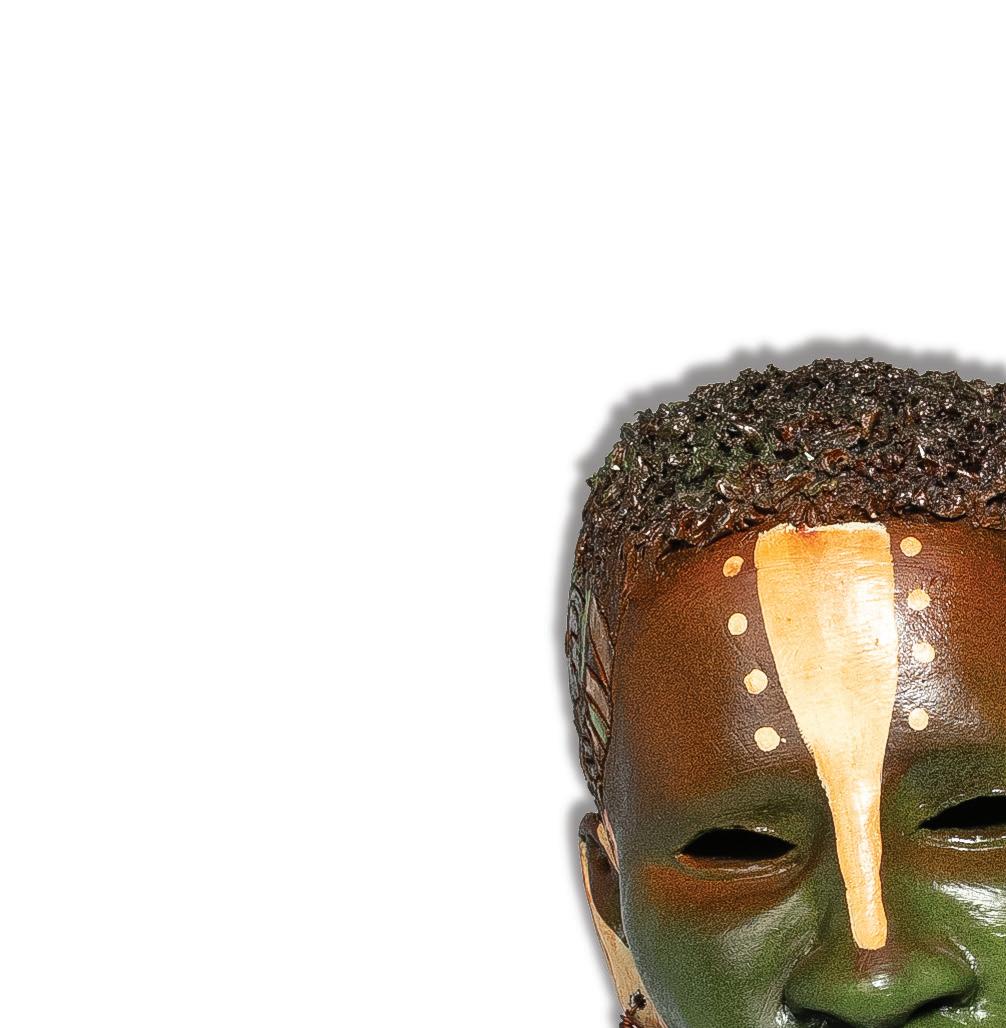
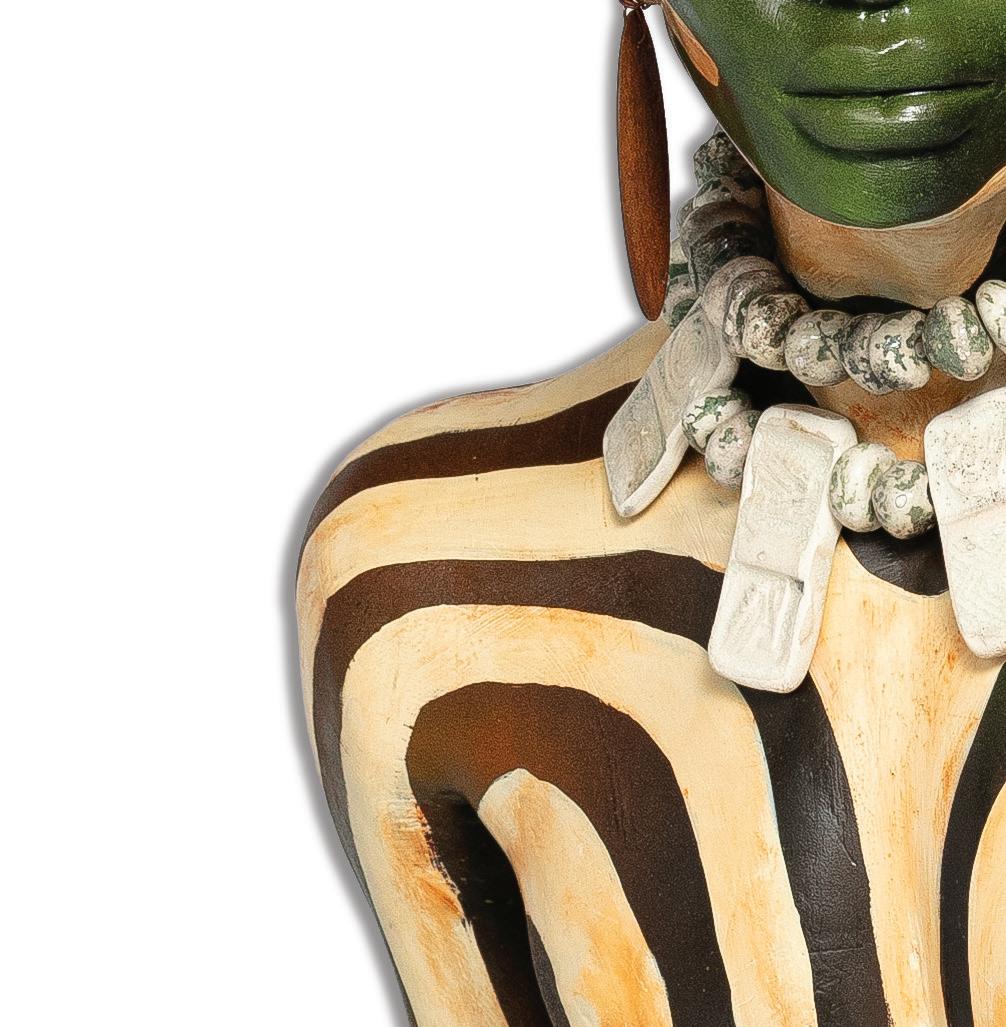
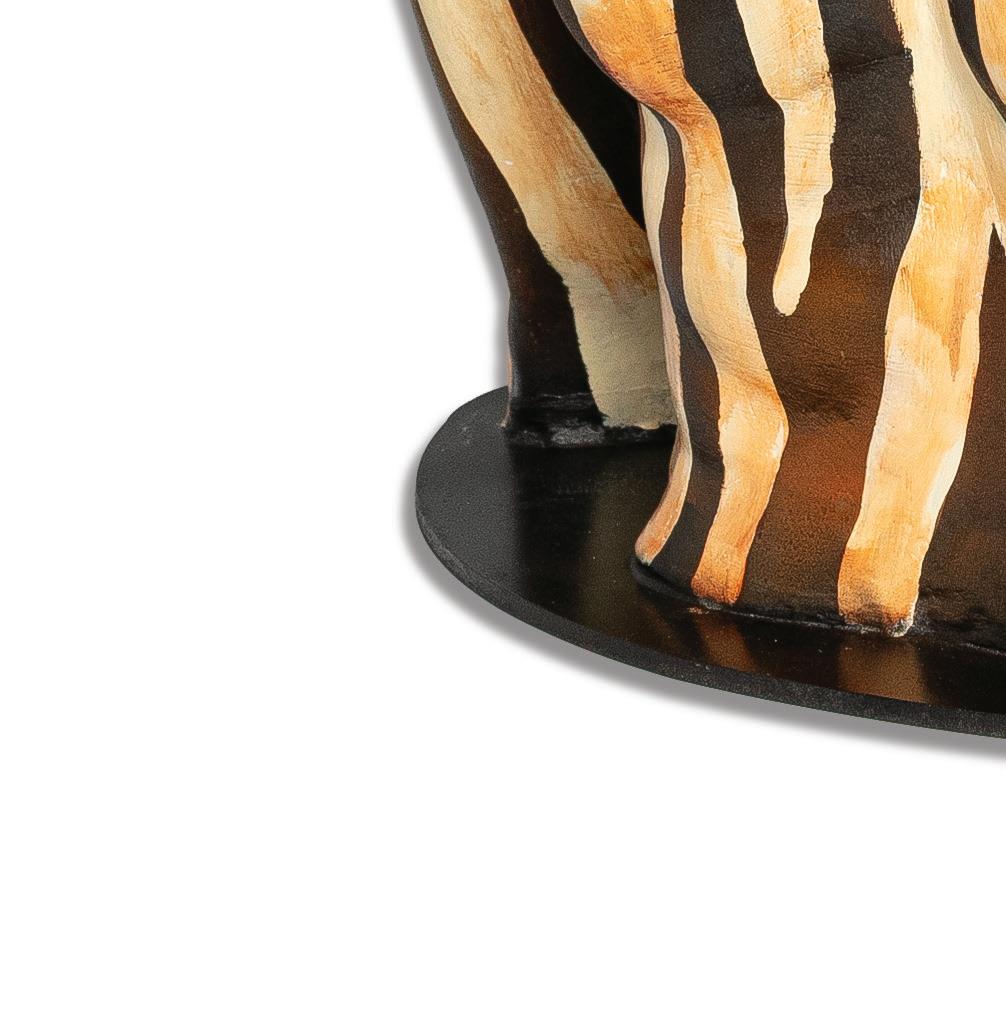
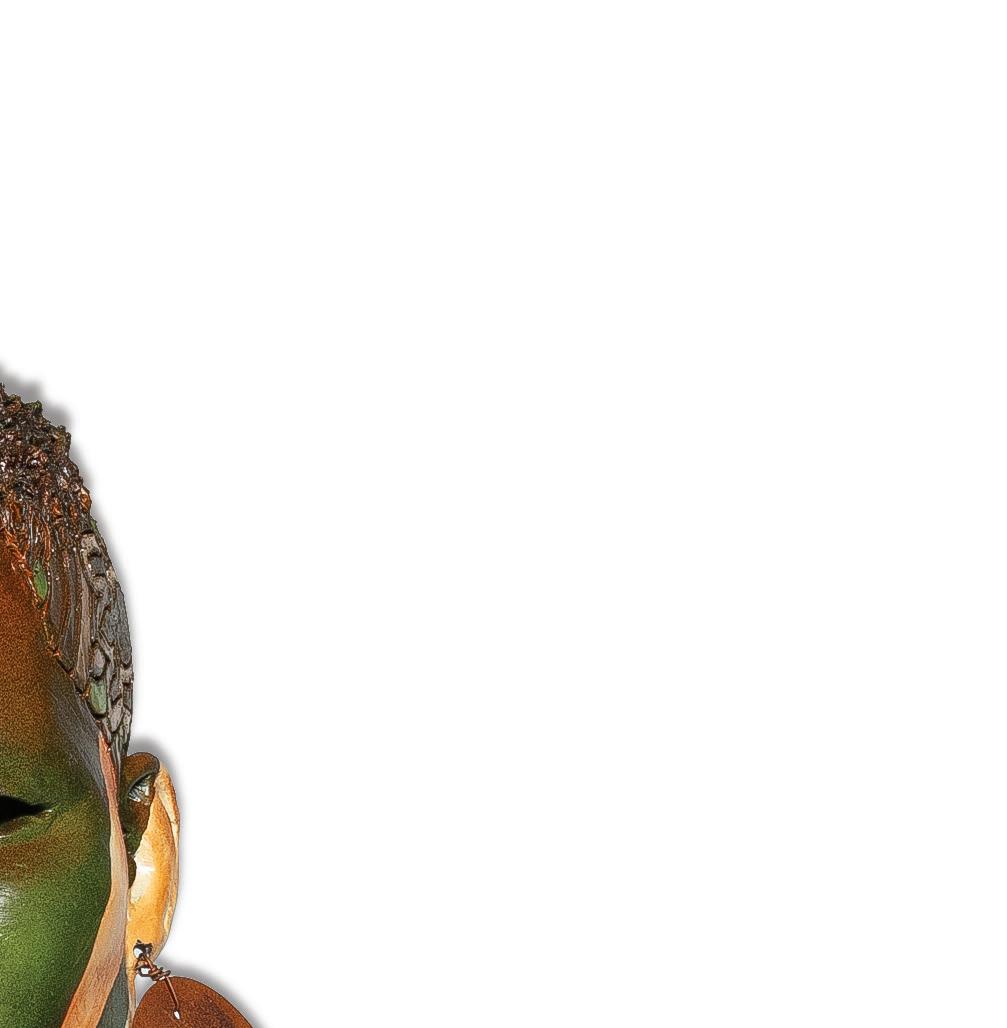
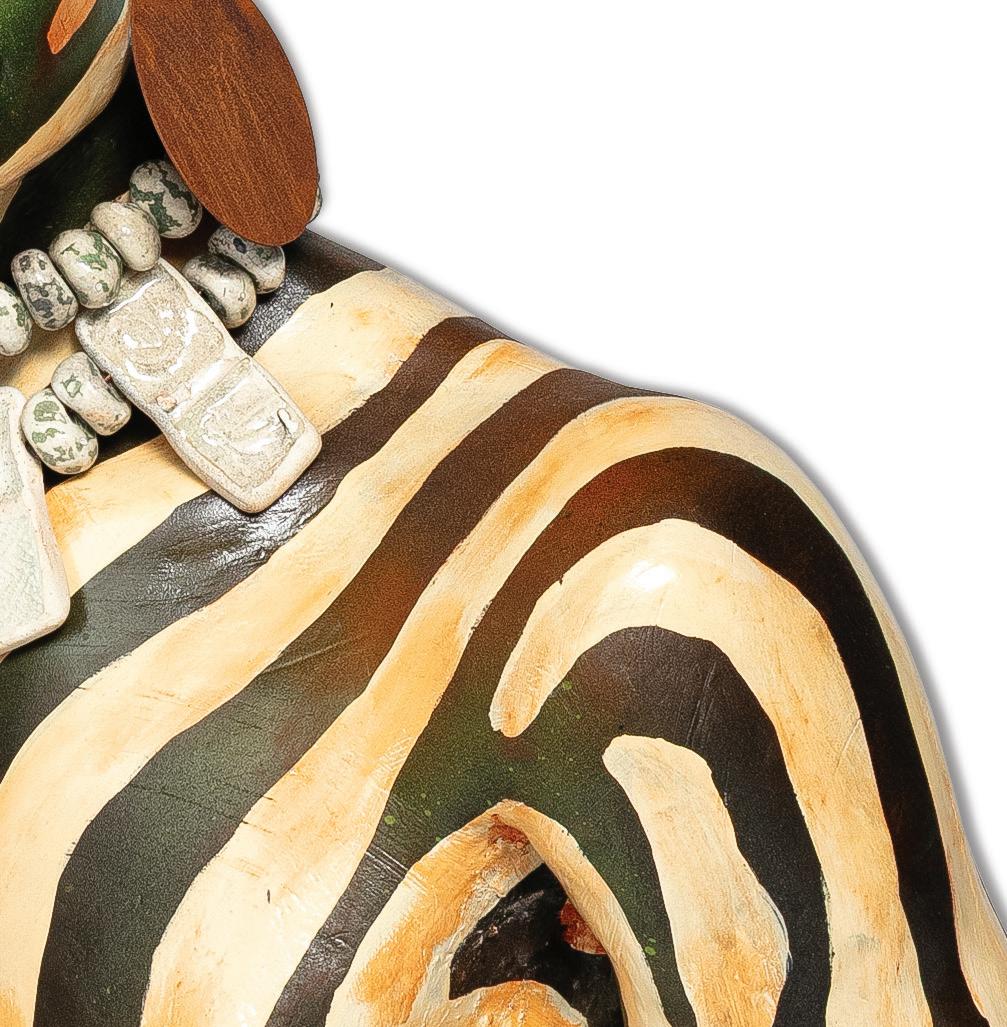
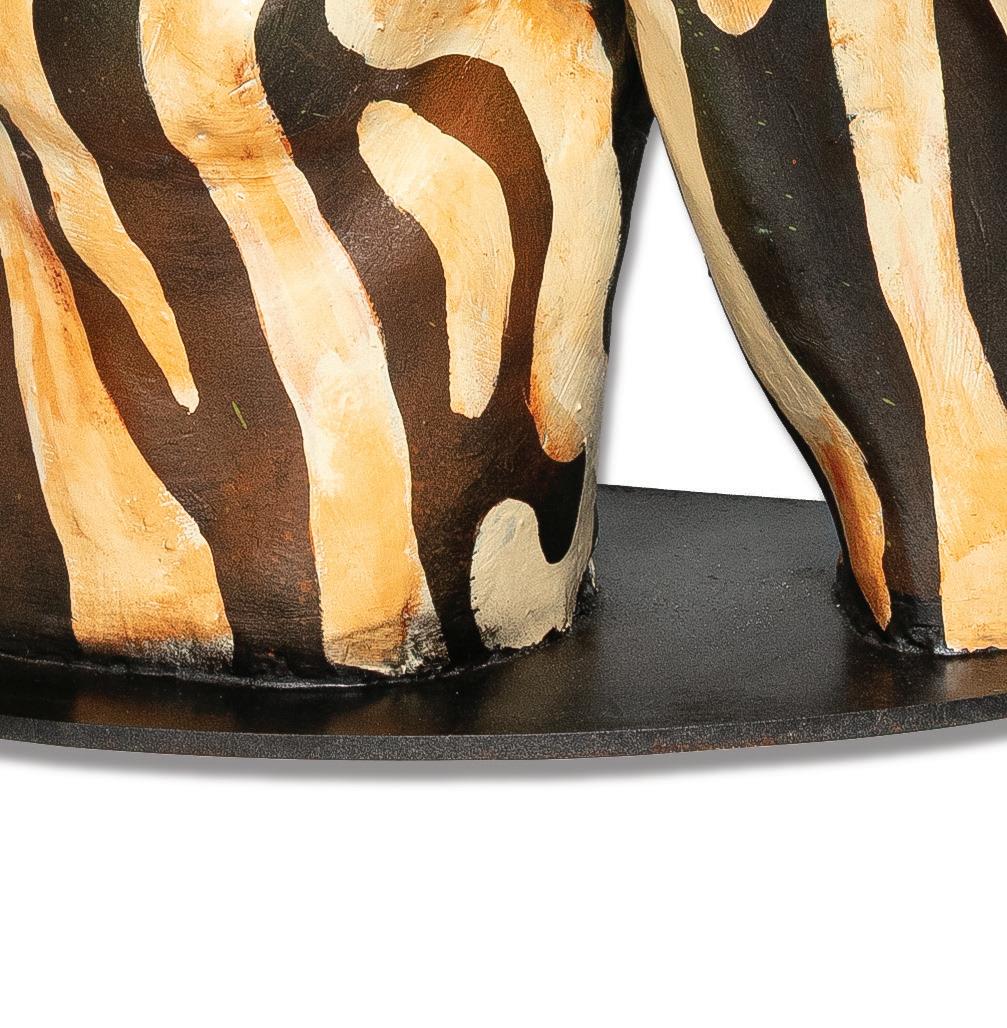

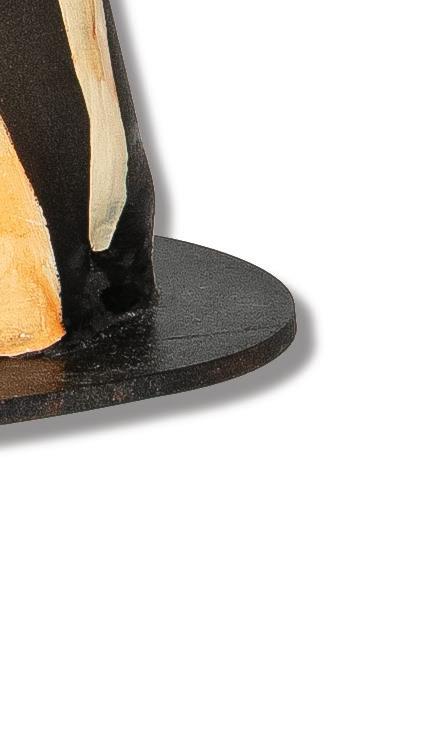
Woodrow Nash (b. 1948 )
Malaika, 2022
stoneware
25 x 19 x10 inches

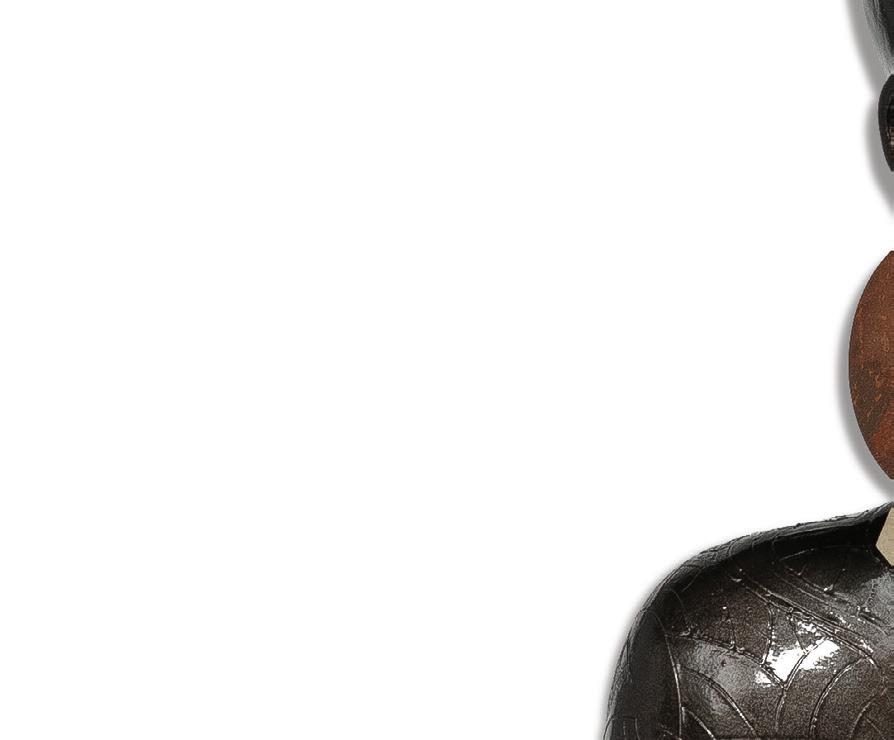
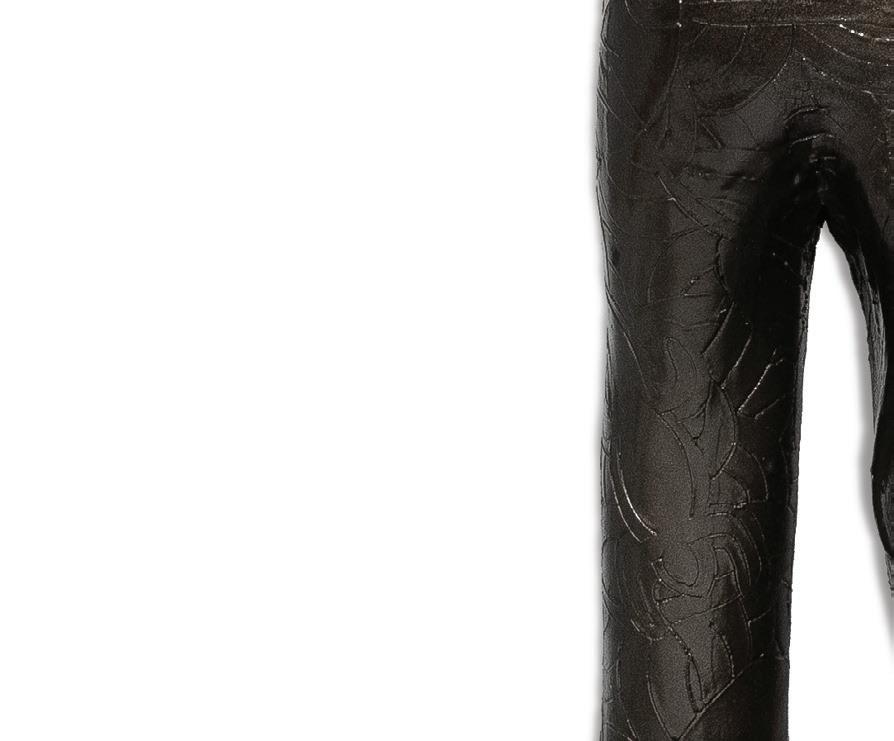
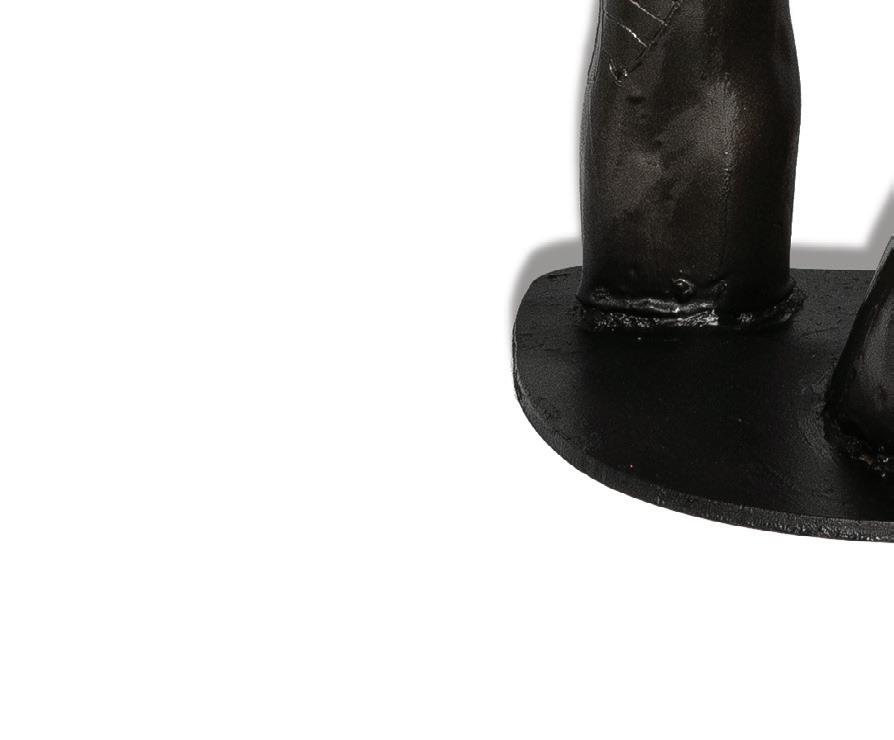
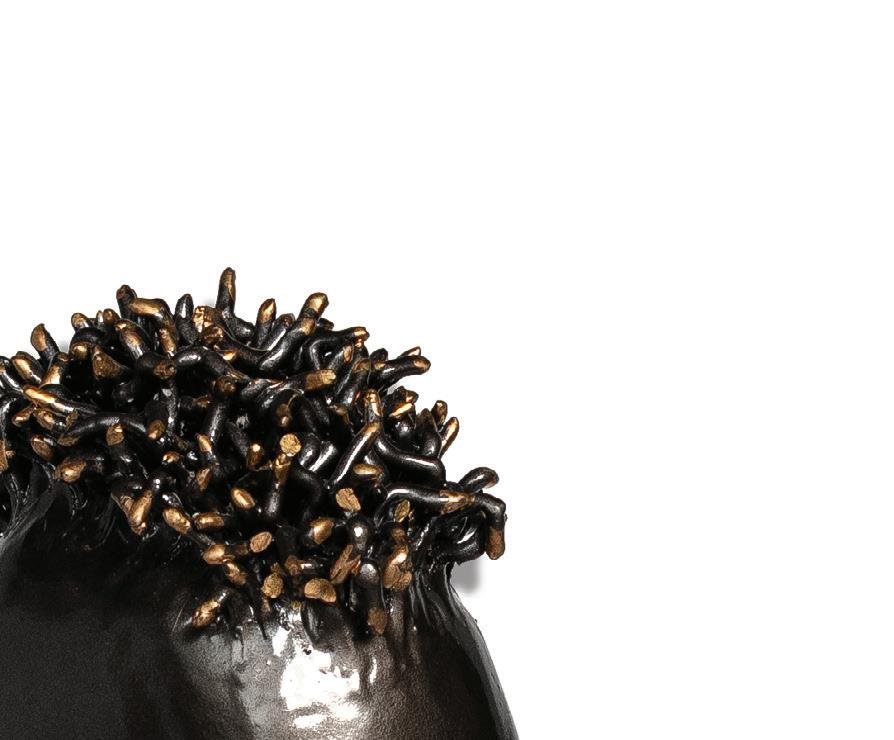
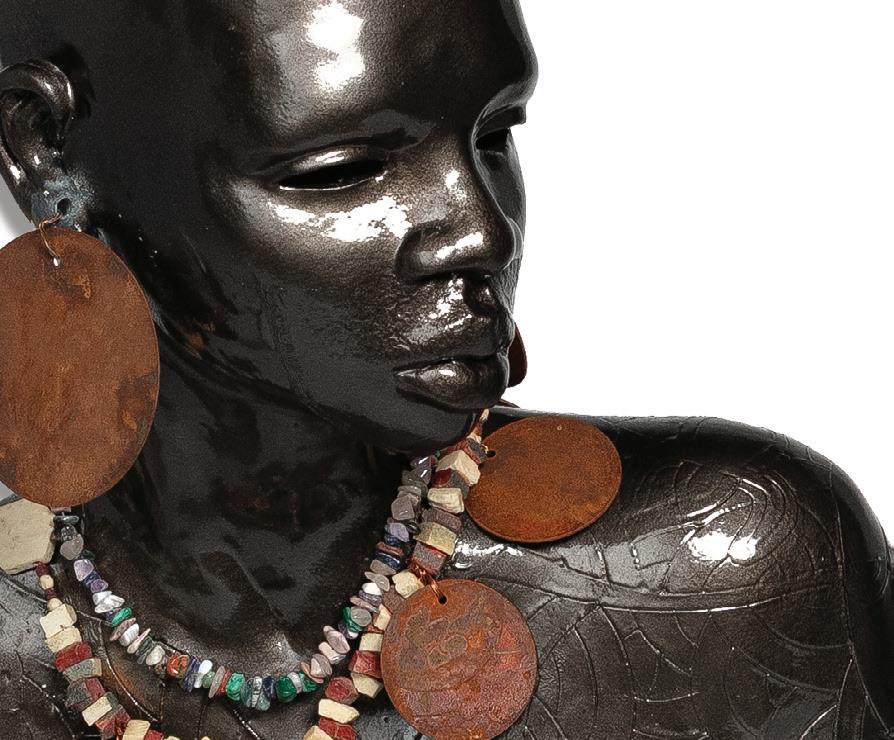
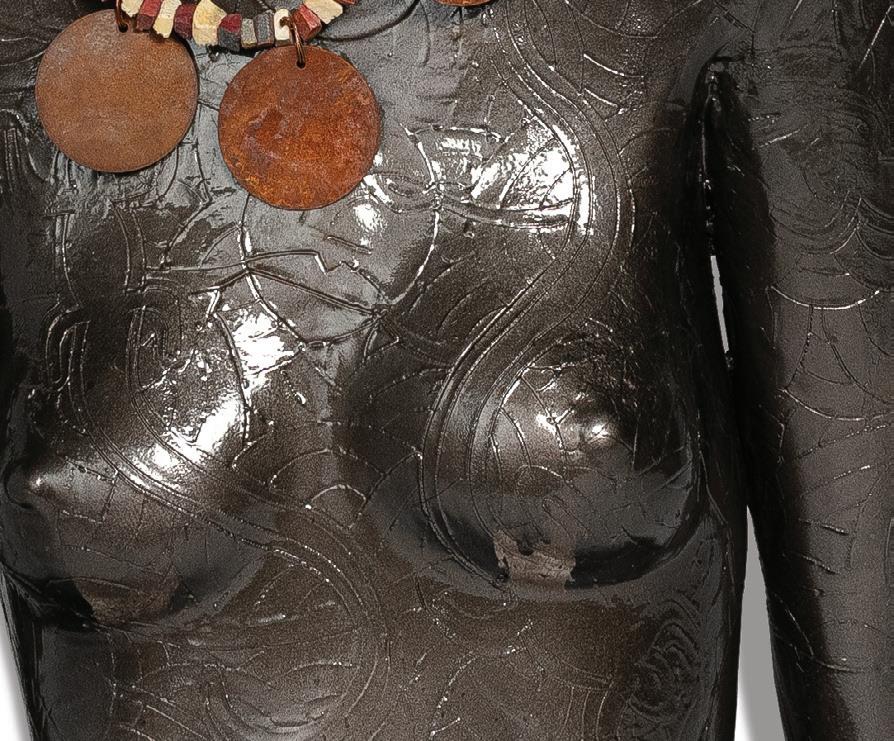
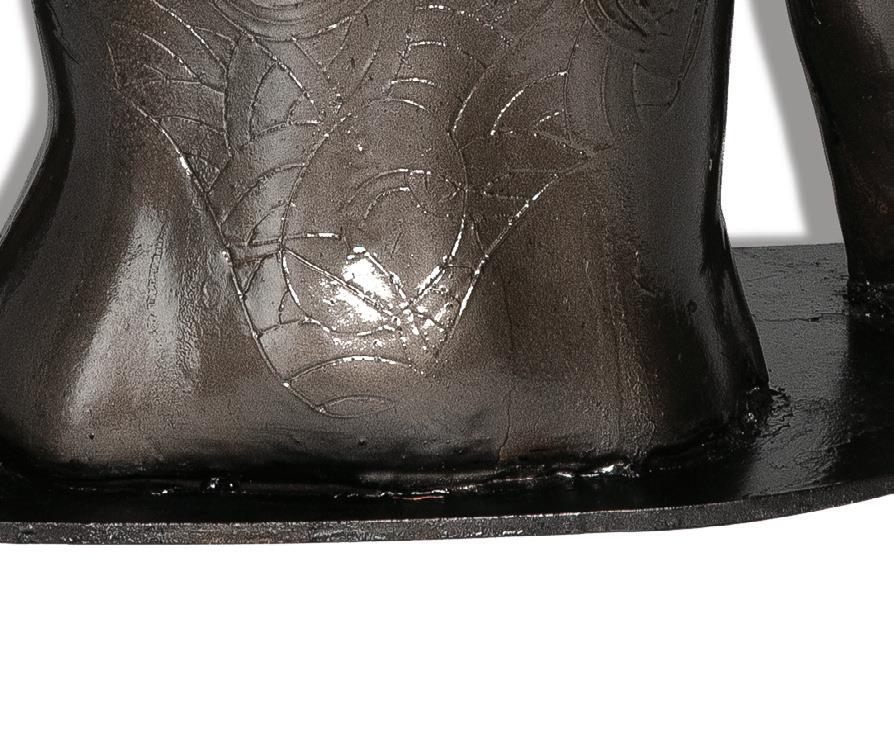

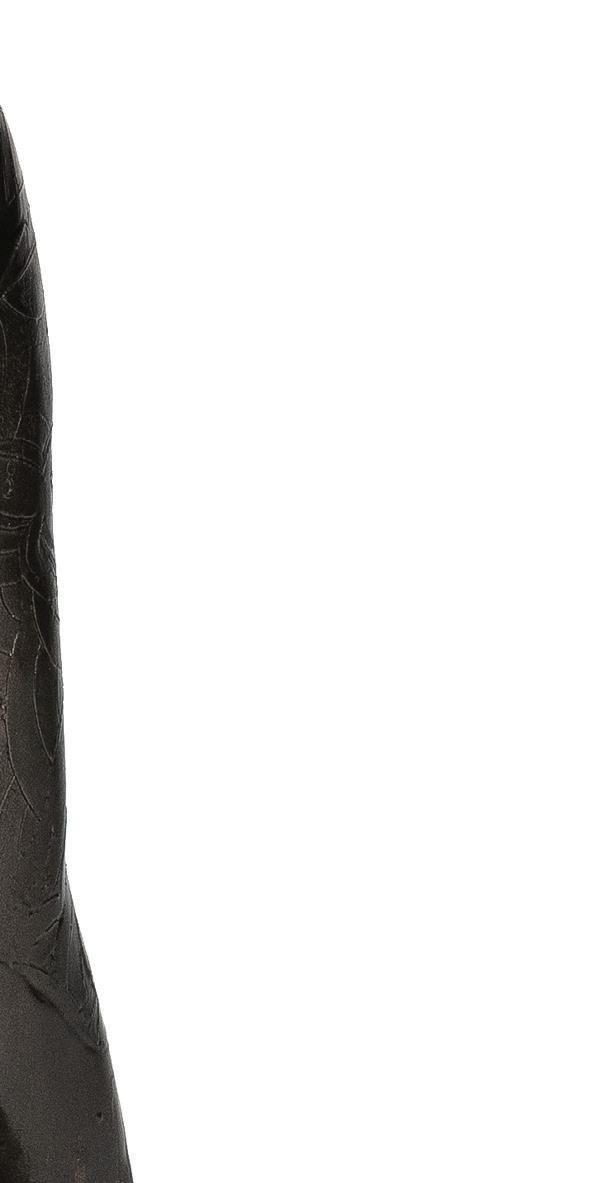
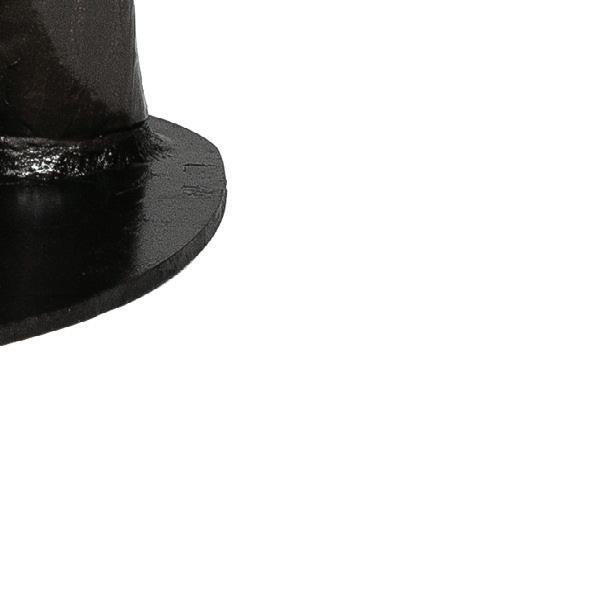
Charly Palmer (b. 1960)
James Baldwin, 2023
acrylic on canvas 36 x 24 inches
signed
Charly Palmer was born in 1960 in Fayette, Alabama, and raised in Milwaukee, Wisconsin. He later moved to Chicago to study art and design at the American Academy of Art and the School of the Art Institute. As a graphic designer and illustrator, Palmer ran a successful design studio serving Fortune 500 clients, while also teaching design, illustration, and painting at the post-secondary level, Most recently he has taught at Spelman College. Today, he devotes himself fully to his studio practice and has established a national reputation as a fine artist of distinction.
Palmer’s work is held in both private and public collections, including those of Atlanta Life Insurance, McDonald’s Corporation, Miller Brewing Company, Coca-Cola, and Vanderbilt University. His commissions include artwork for the 1996 Olympic Games, the Atlanta Convention and Visitors Bureau, and commemorative pieces for the 150th anniversaries of both Fisk University (2016) and Howard University (2017). More recently, he collaborated with the Green Bay Packers on a large-scale art installation for Lambeau Field.
Palmer has also brought his vibrant visual storytelling to children’s literature, illustrating There’s a Dragon in My Closet and Mama Africa!, a biography of singer and activist Miriam Makeba. The latter earned him the 2018 Coretta Scott King/John Steptoe New Talent Award. Palmer continues to be a sought-after artist for major commissions and currently lives and works in Atlanta, Georgia.
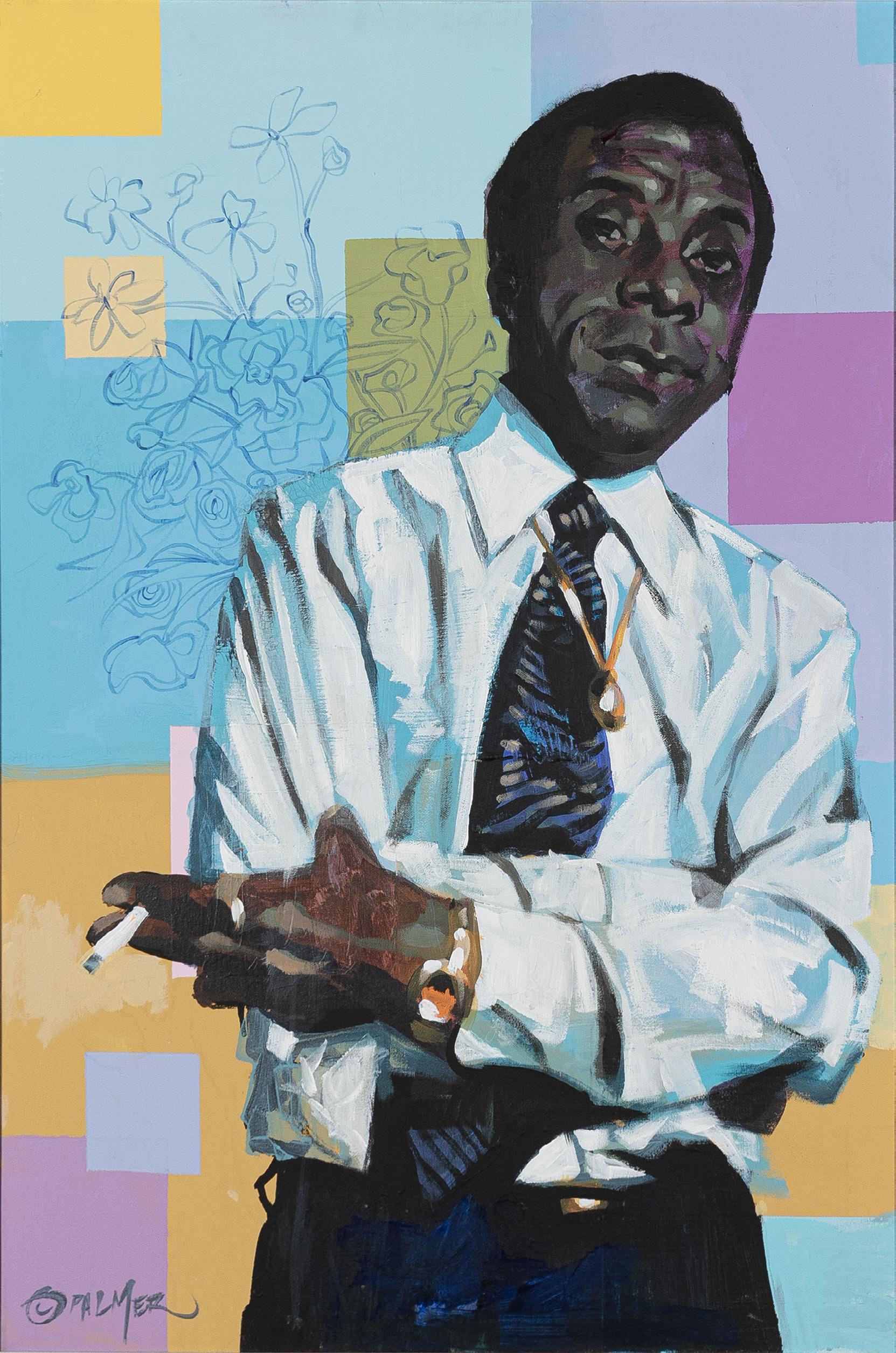
Charly Palmer (b. 1960)
Joseph “Chevalier" Bologne, 2023
acrylic on canvas
30 x 40 inches signed
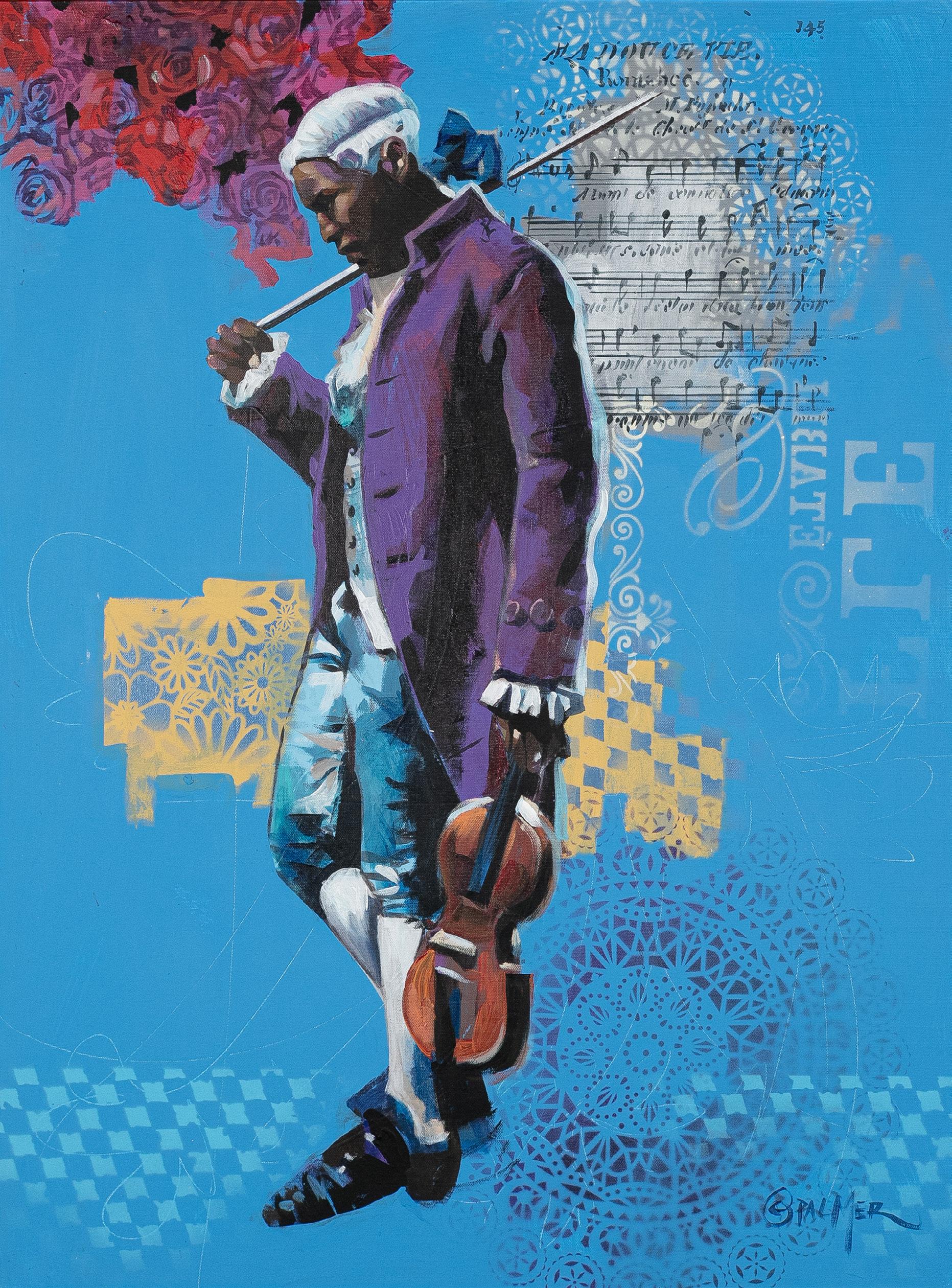
Charly Palmer (b. 1960)
Shirley Chisholm, 2023
acrylic and collage on paper
16 x 20 inches signed
